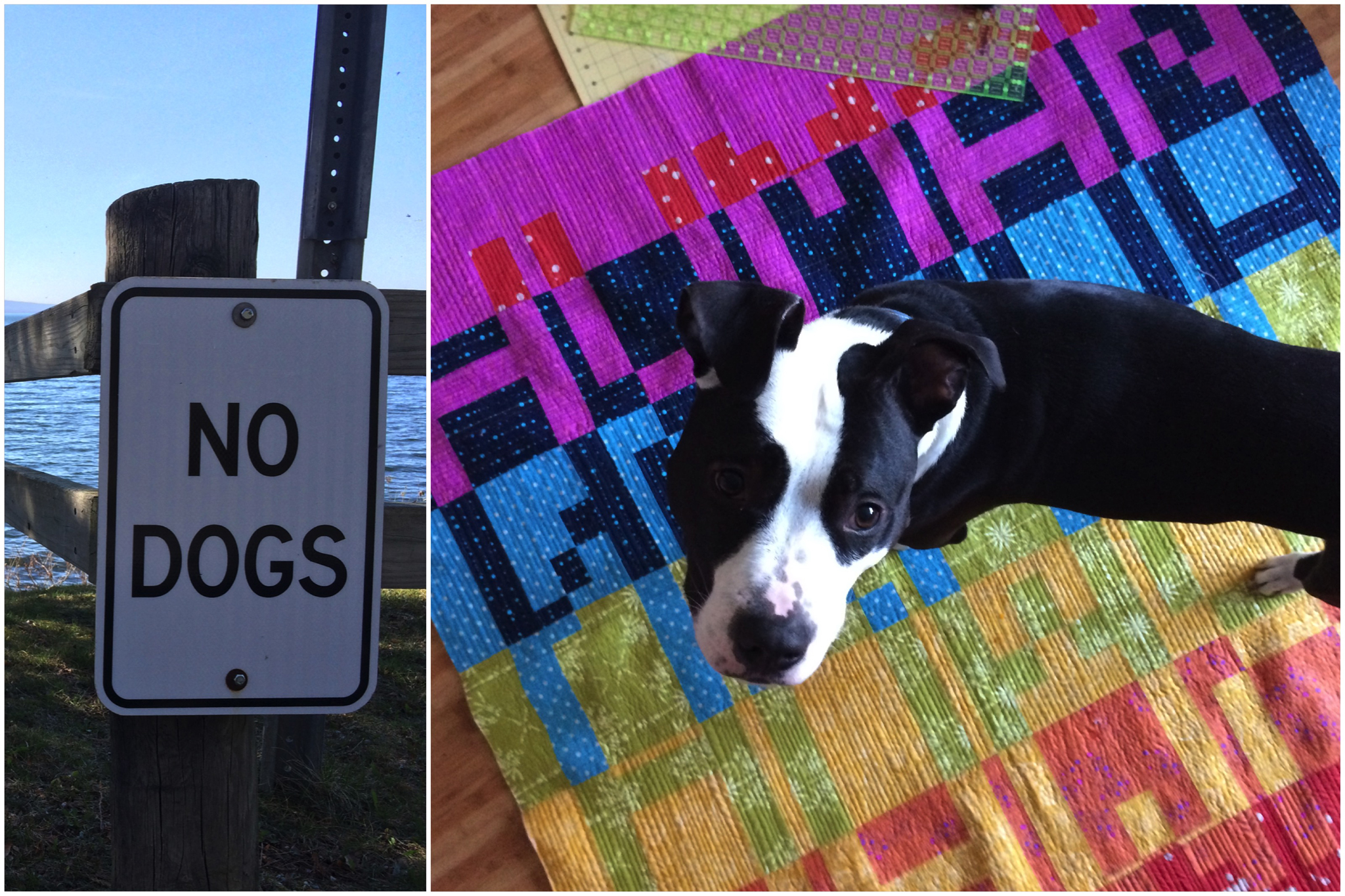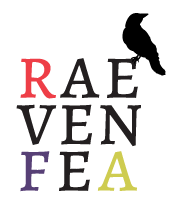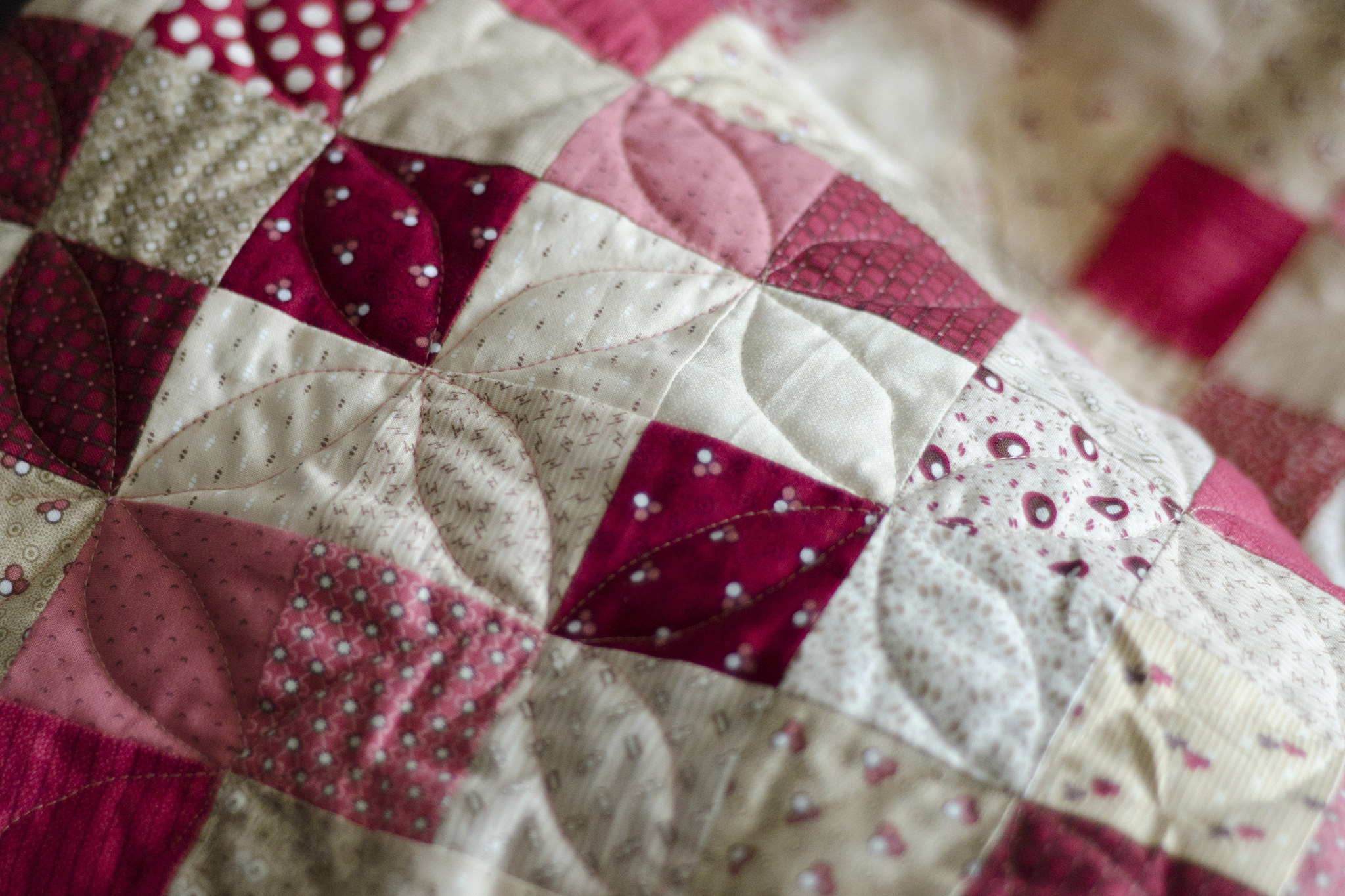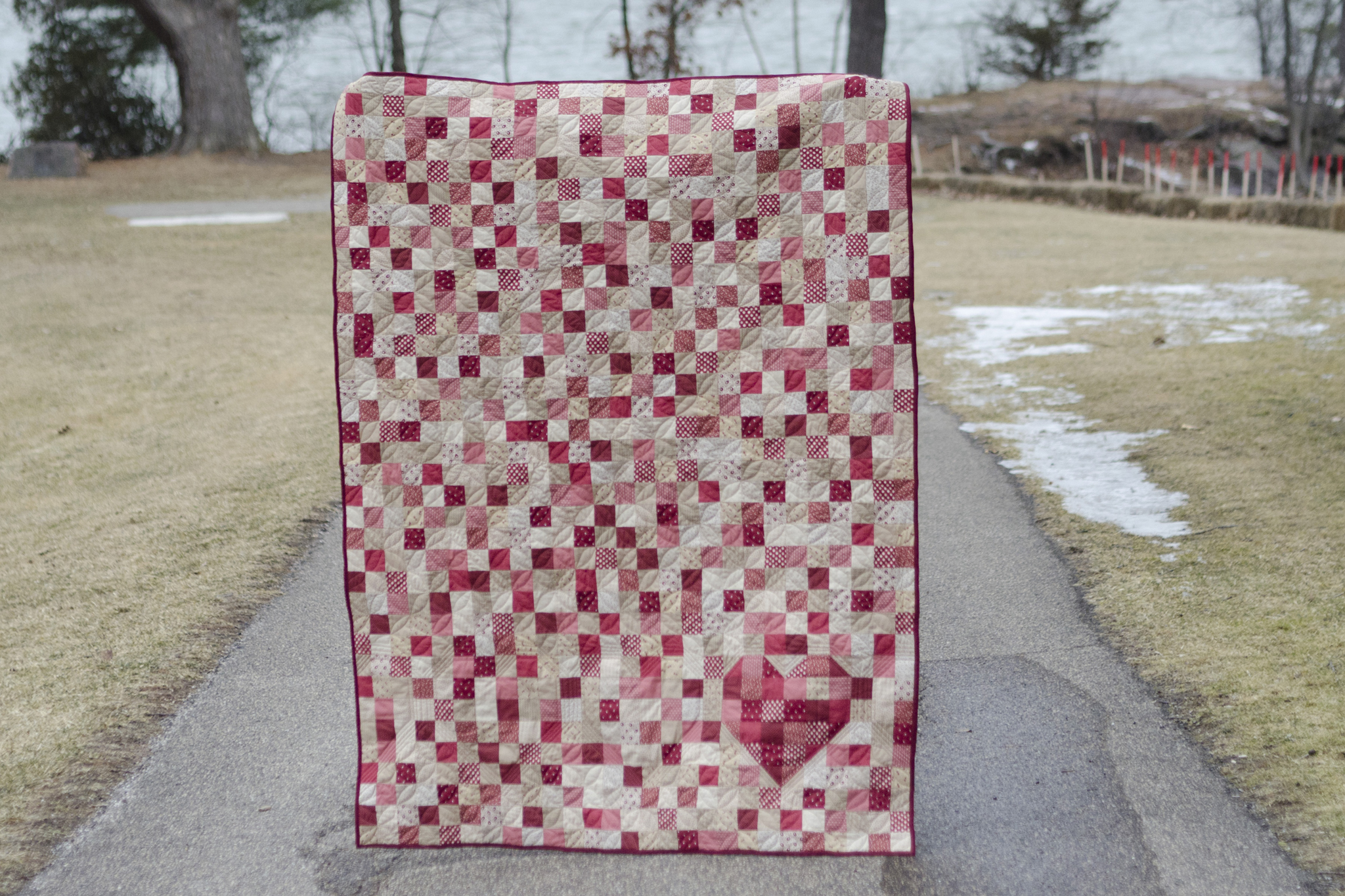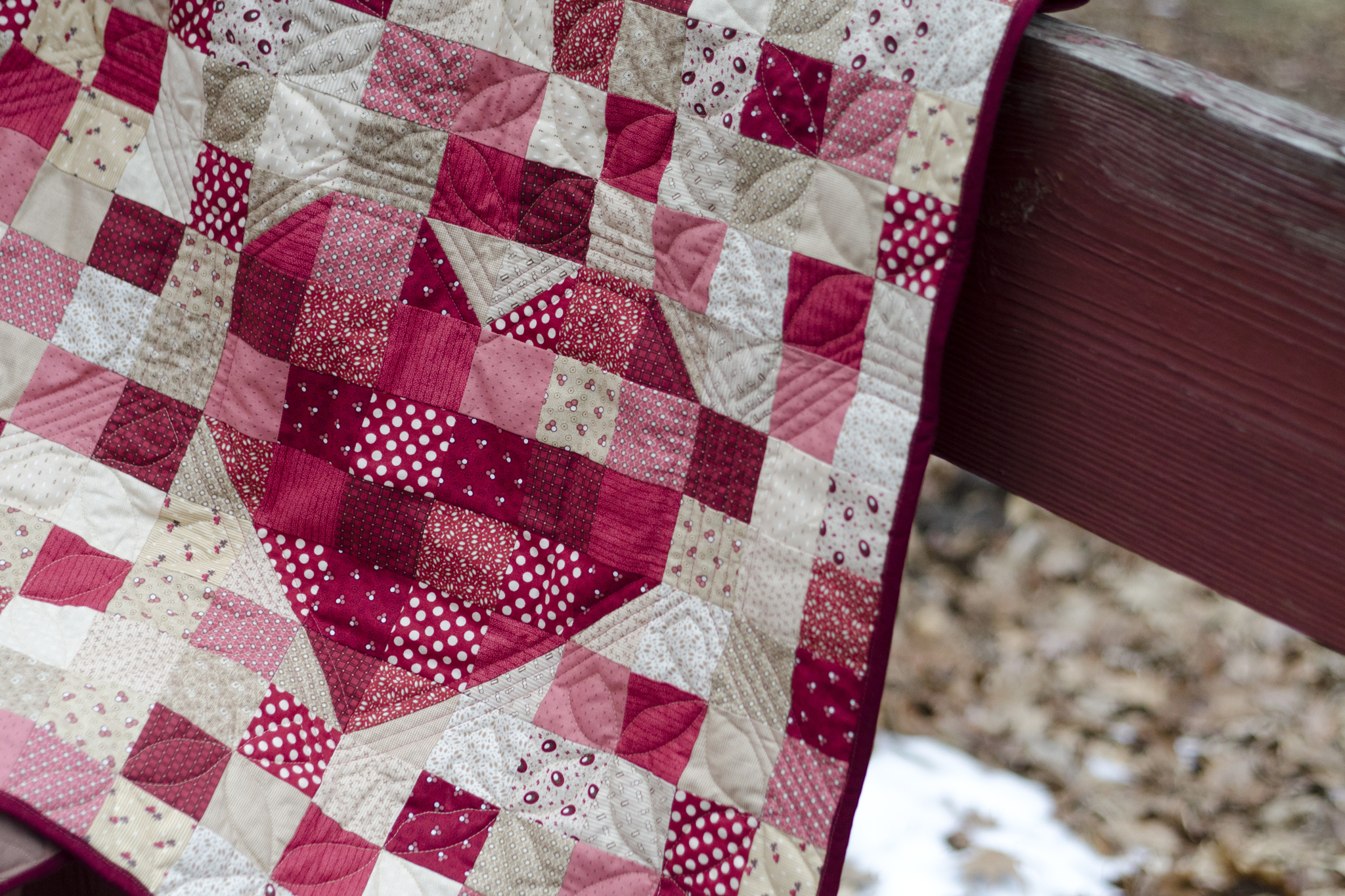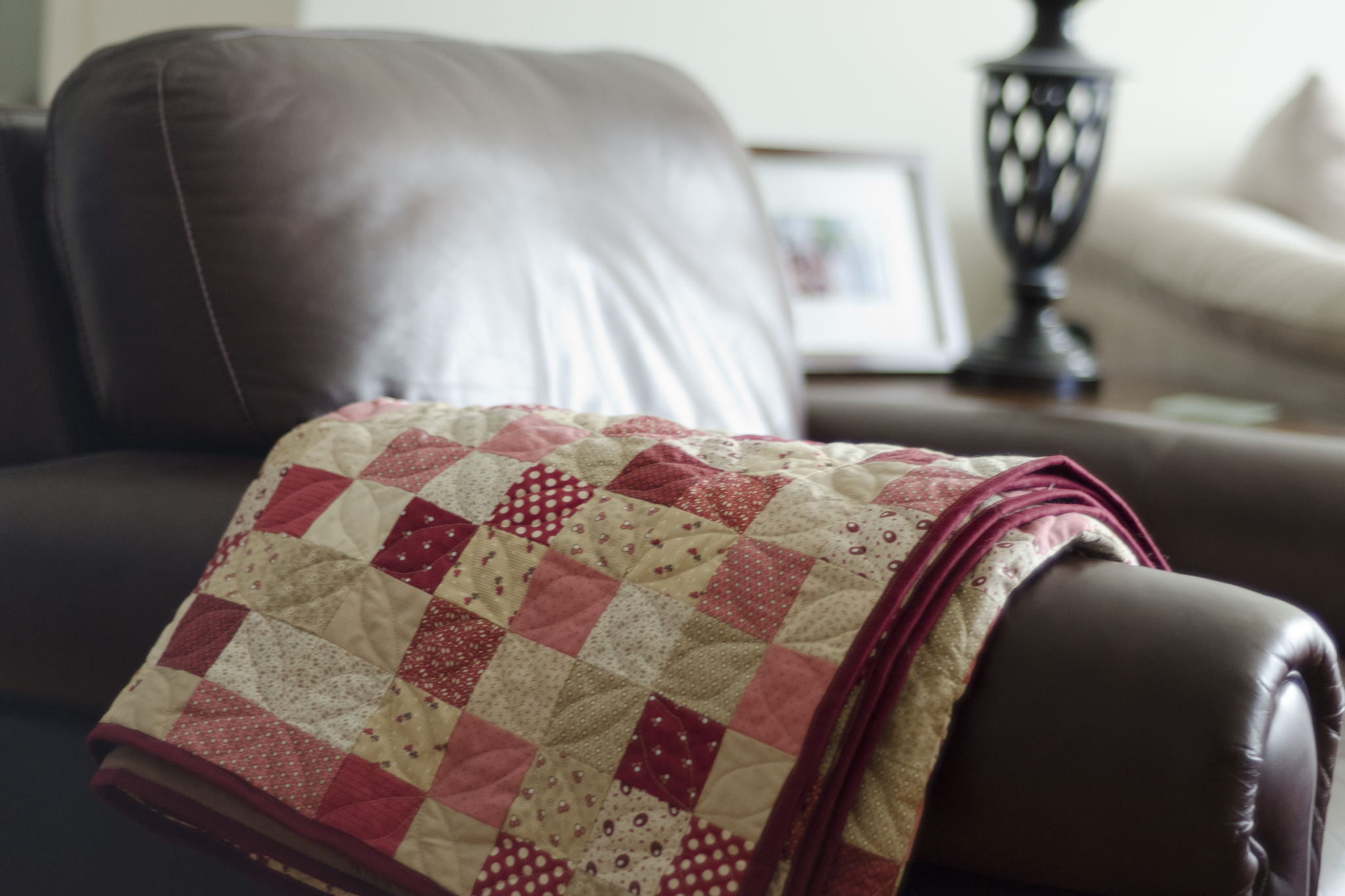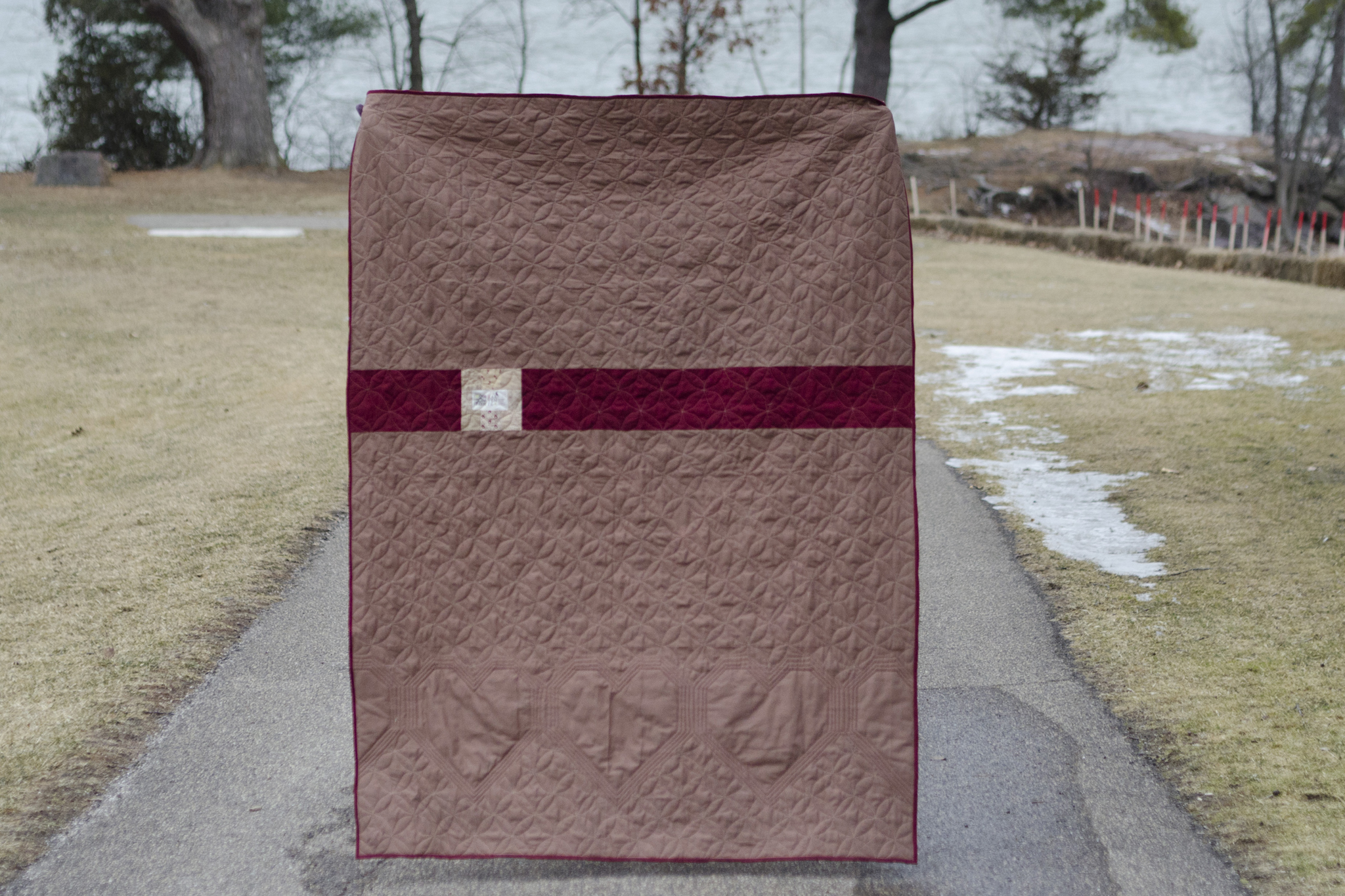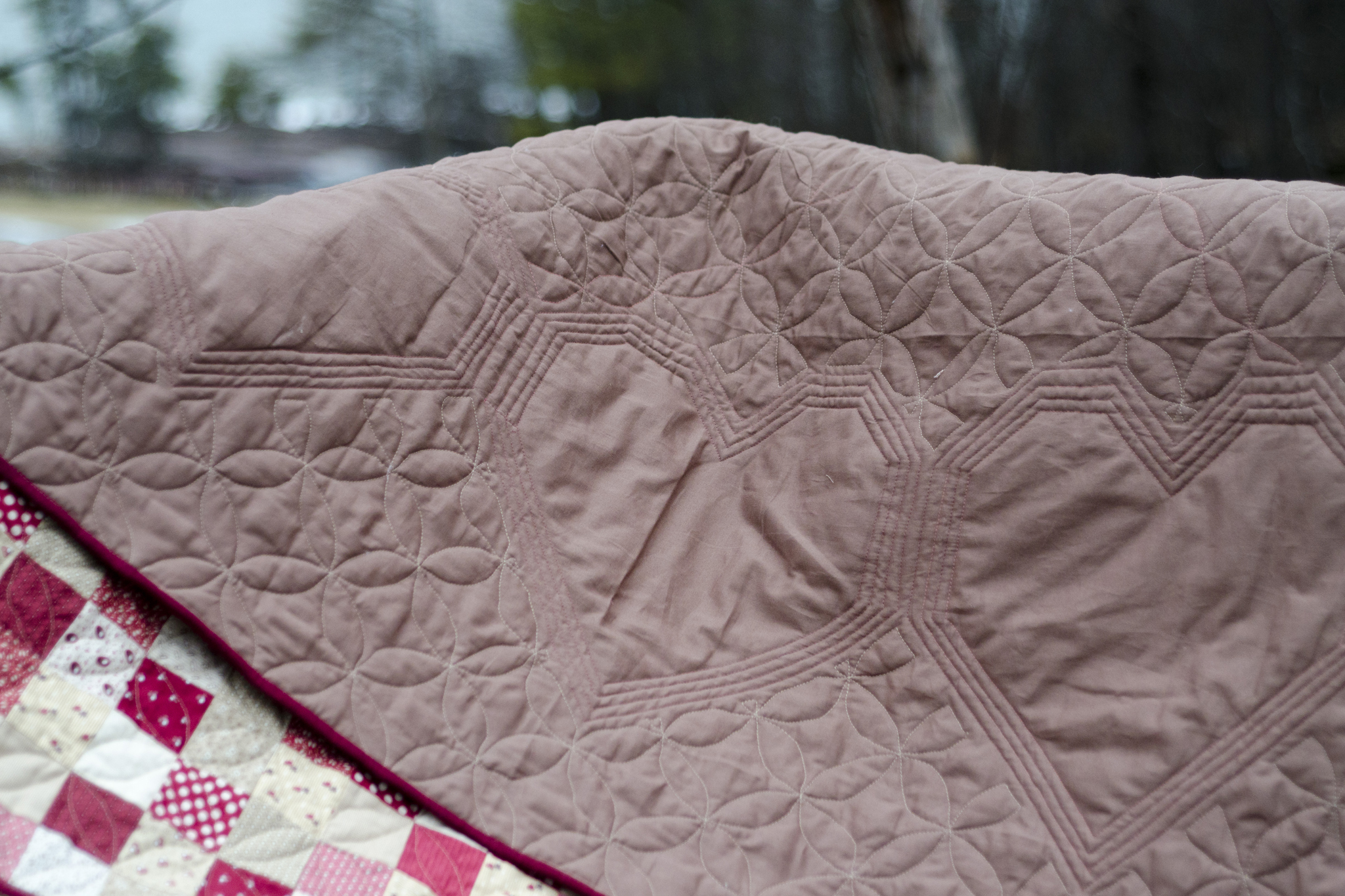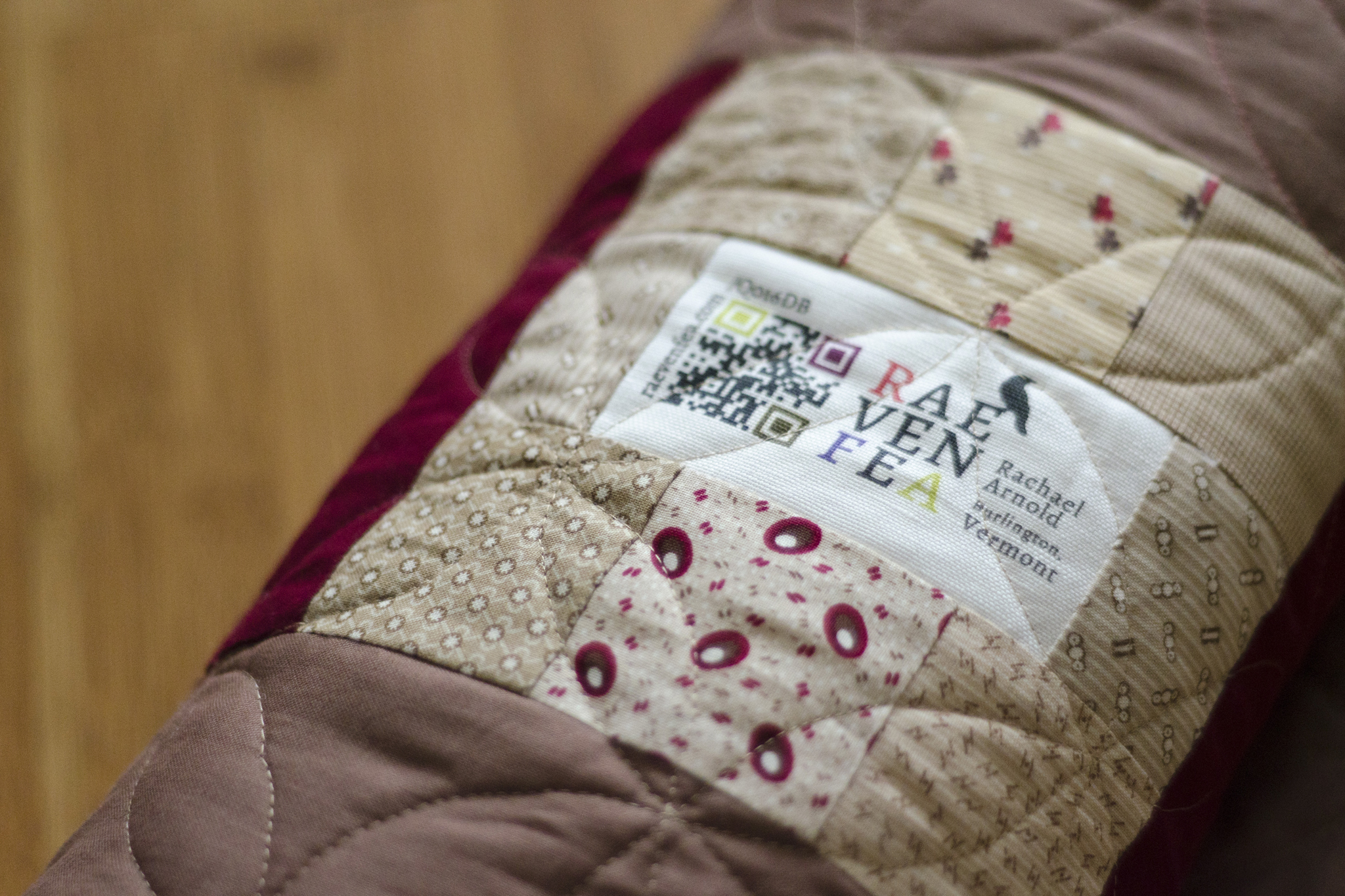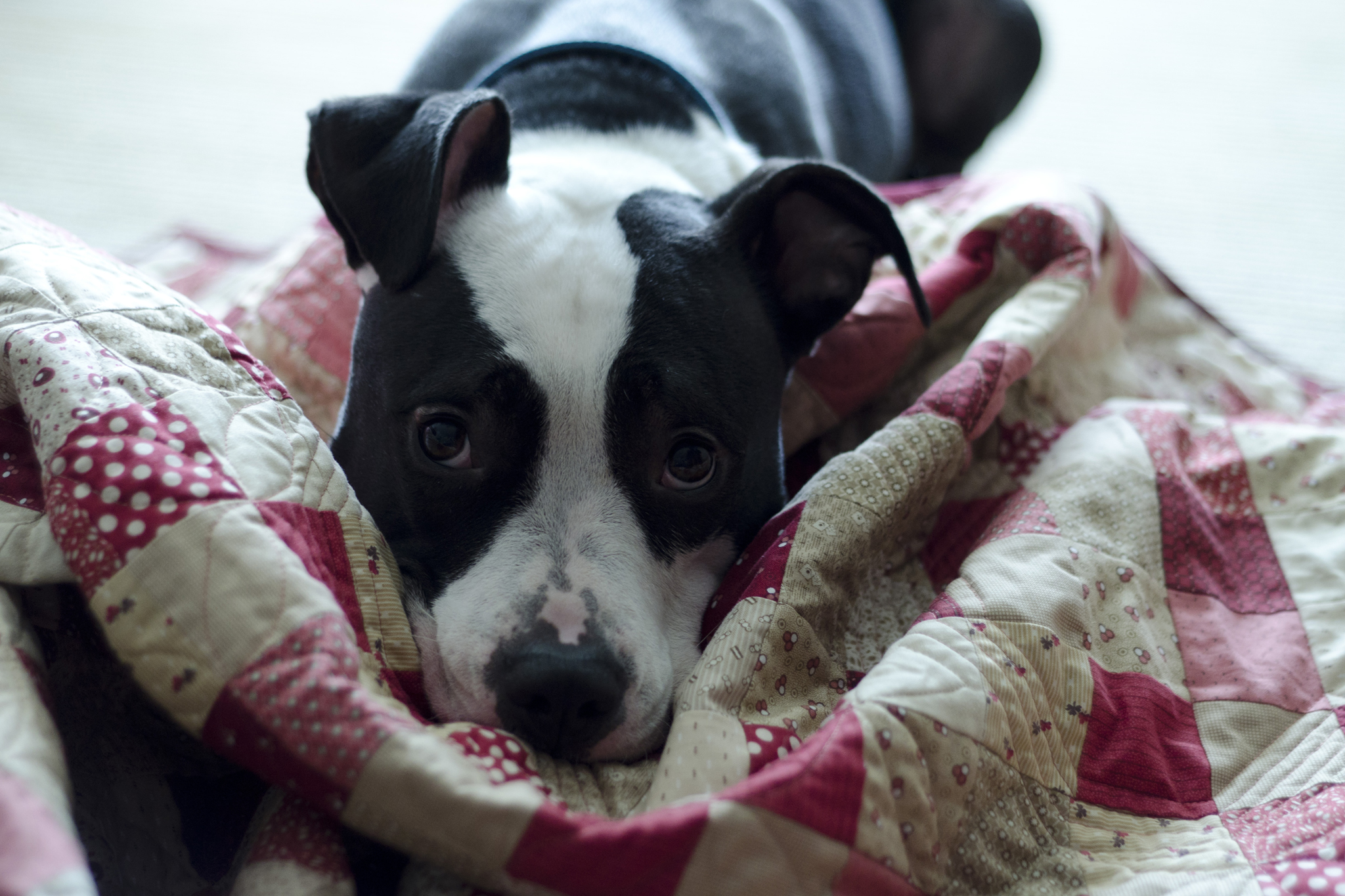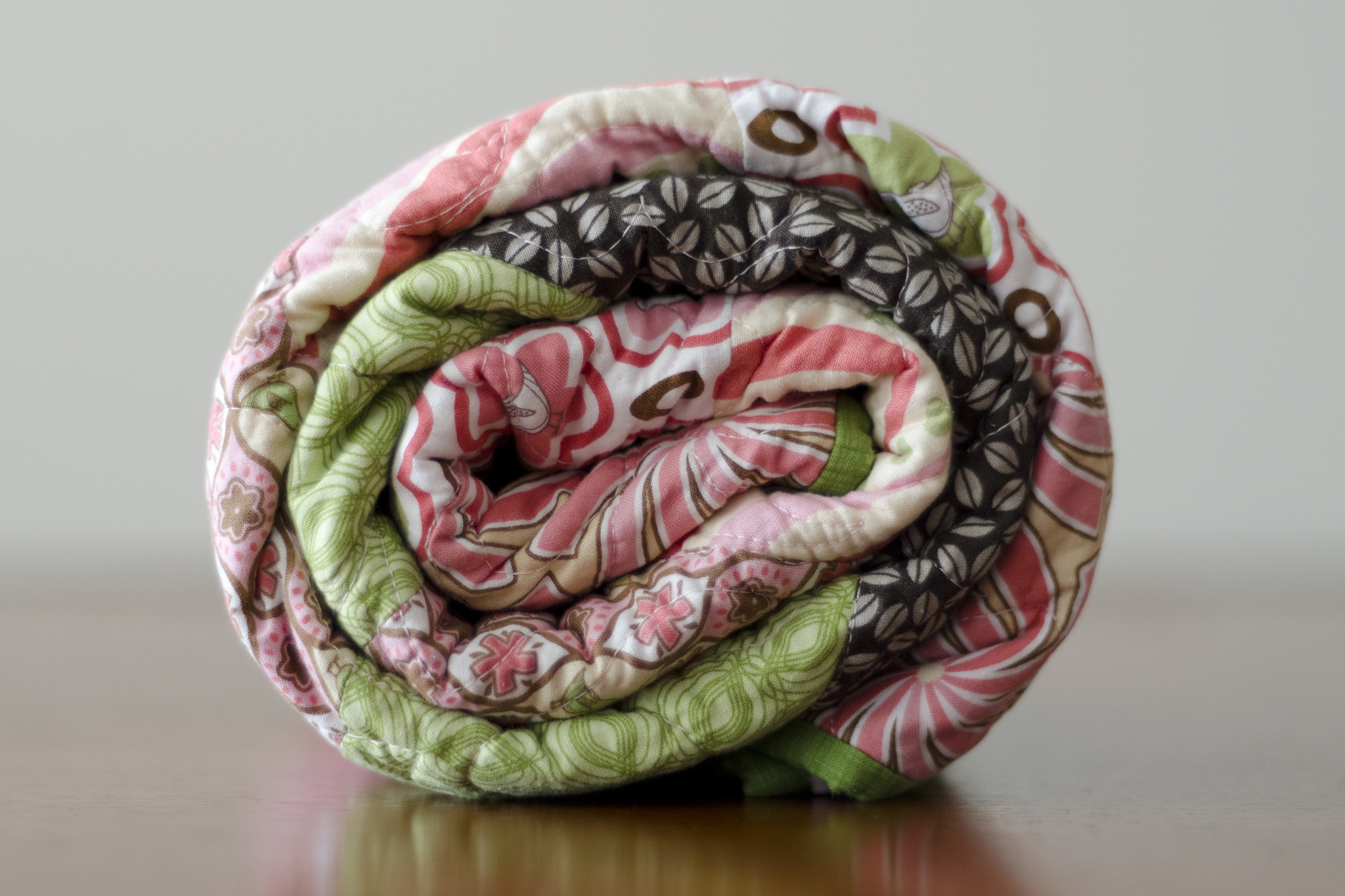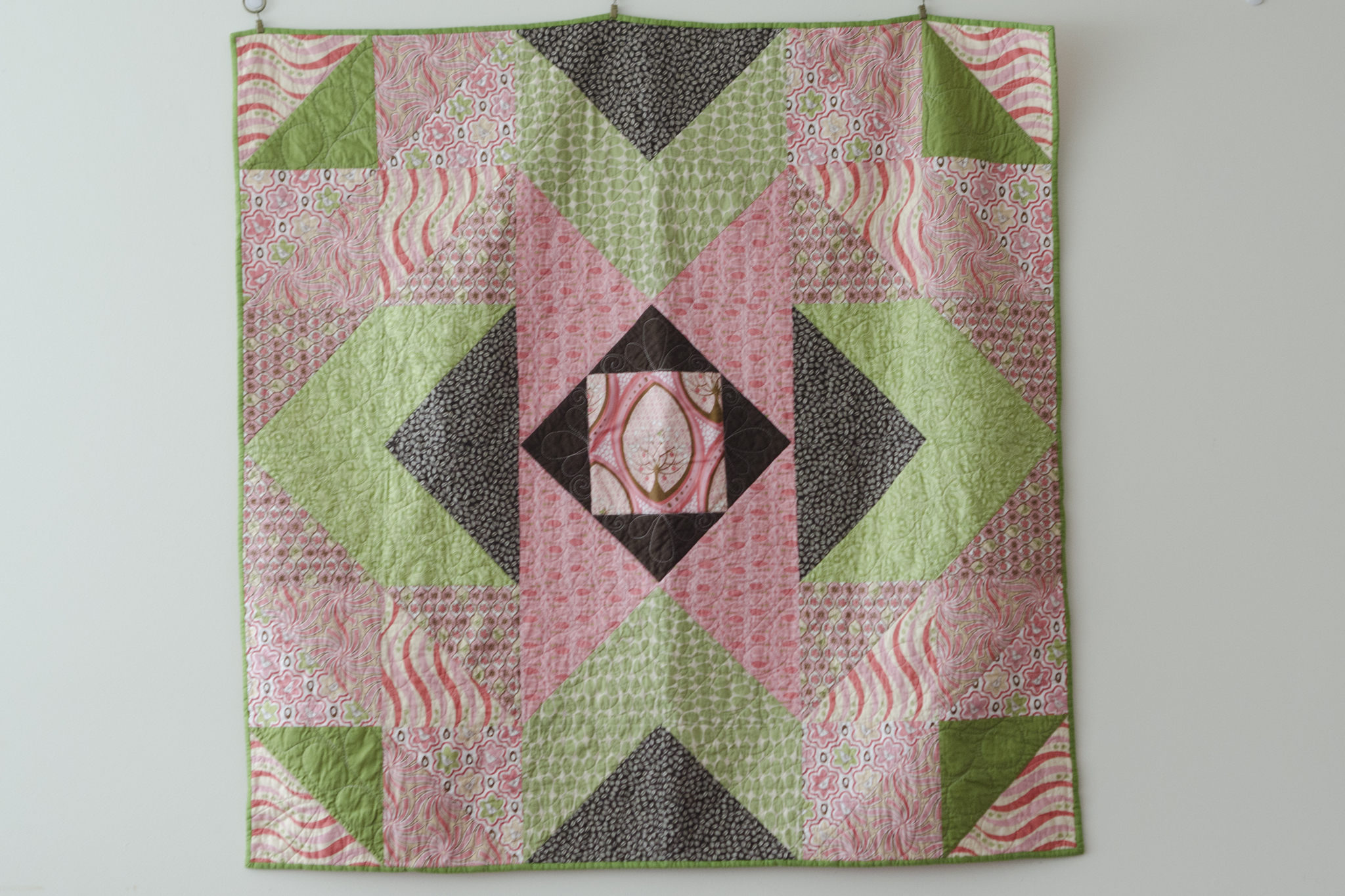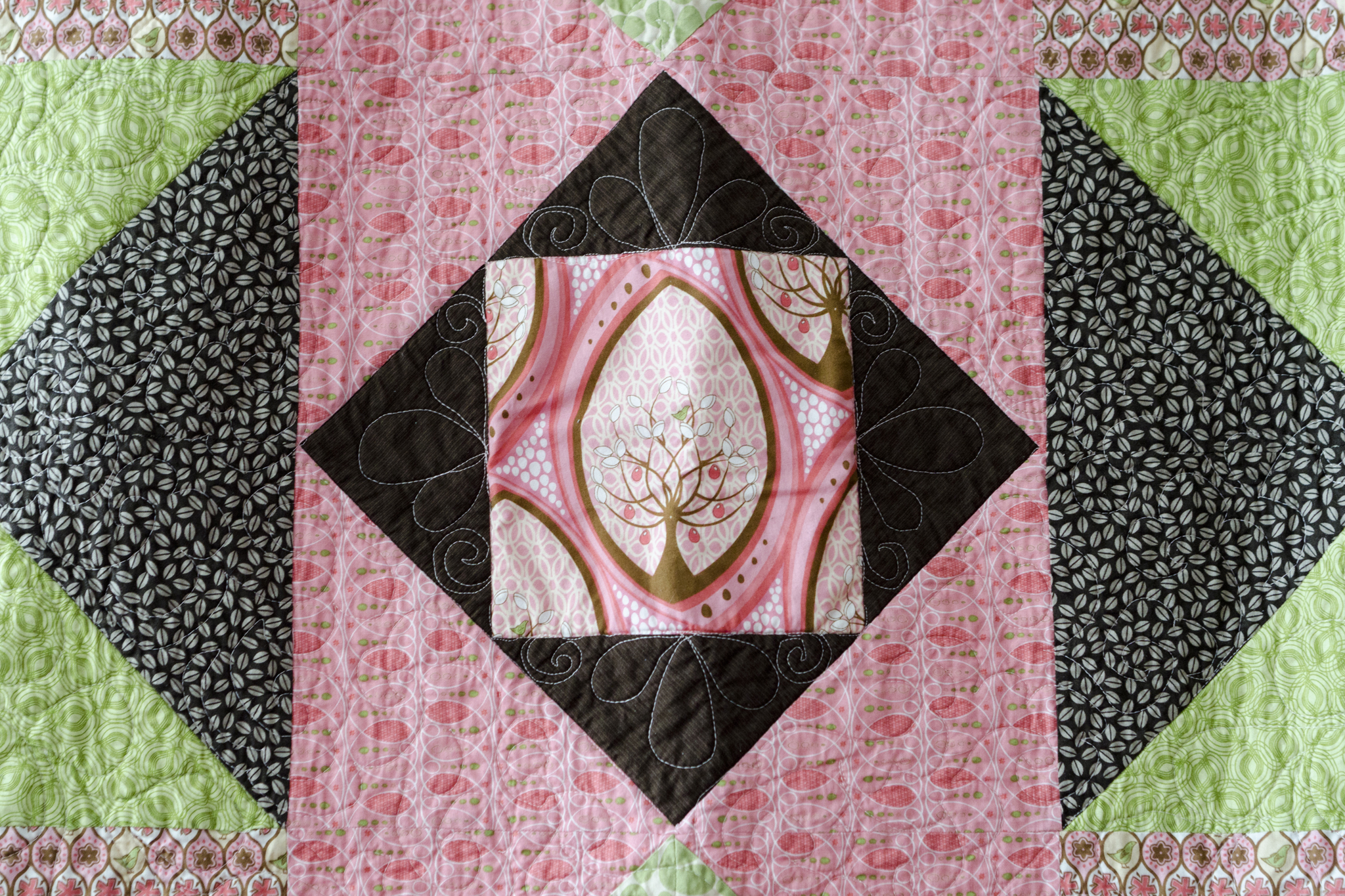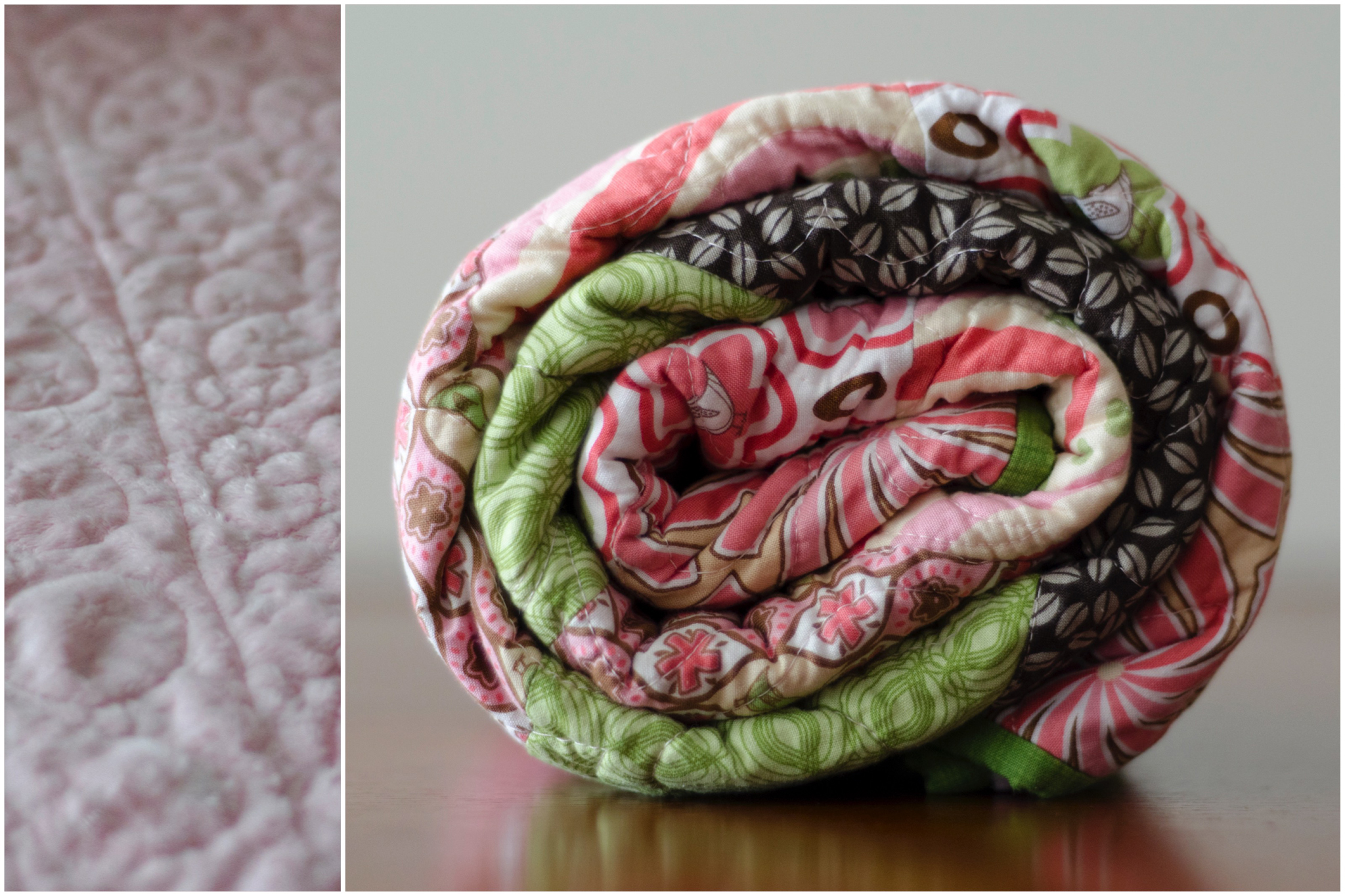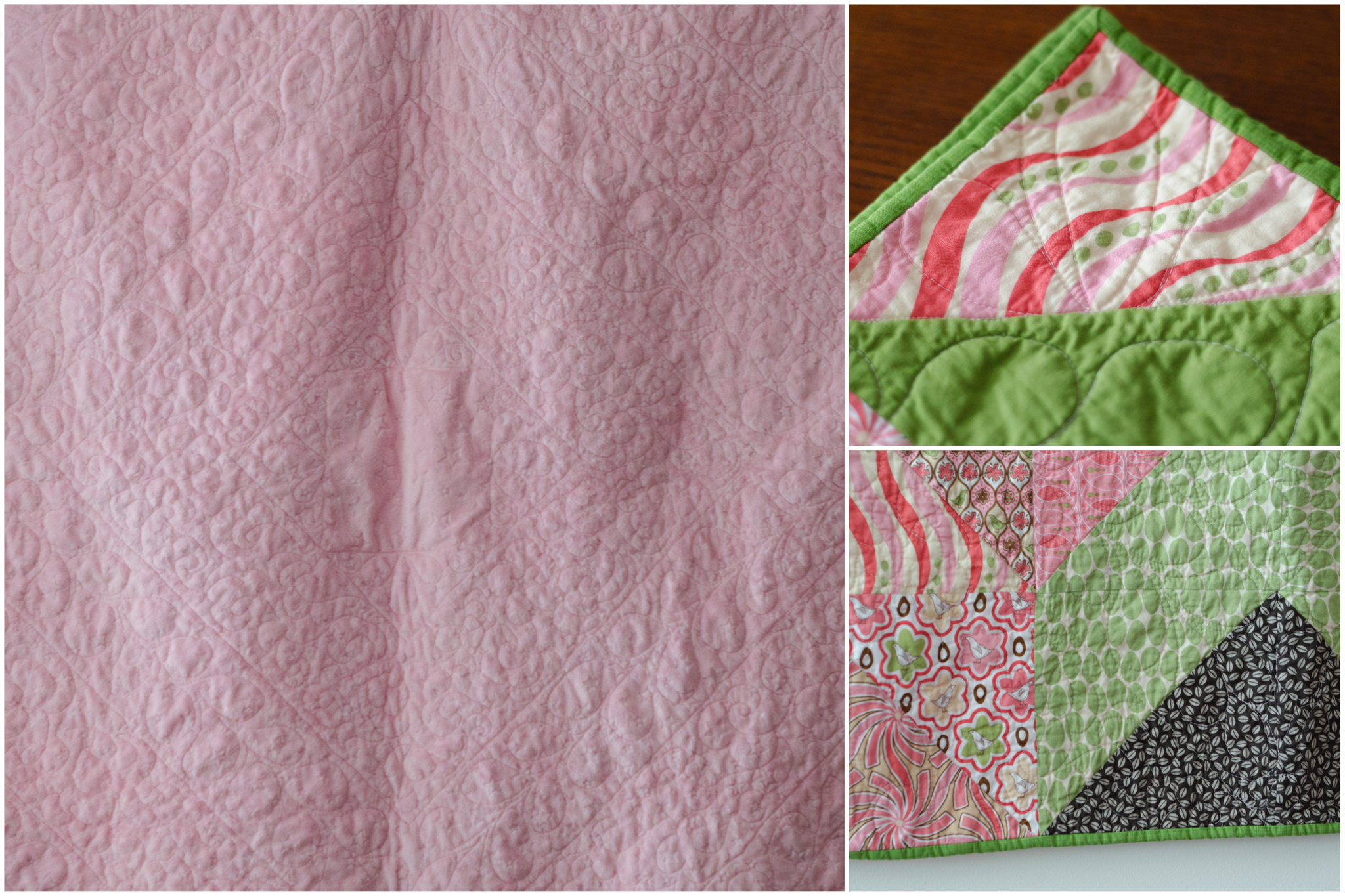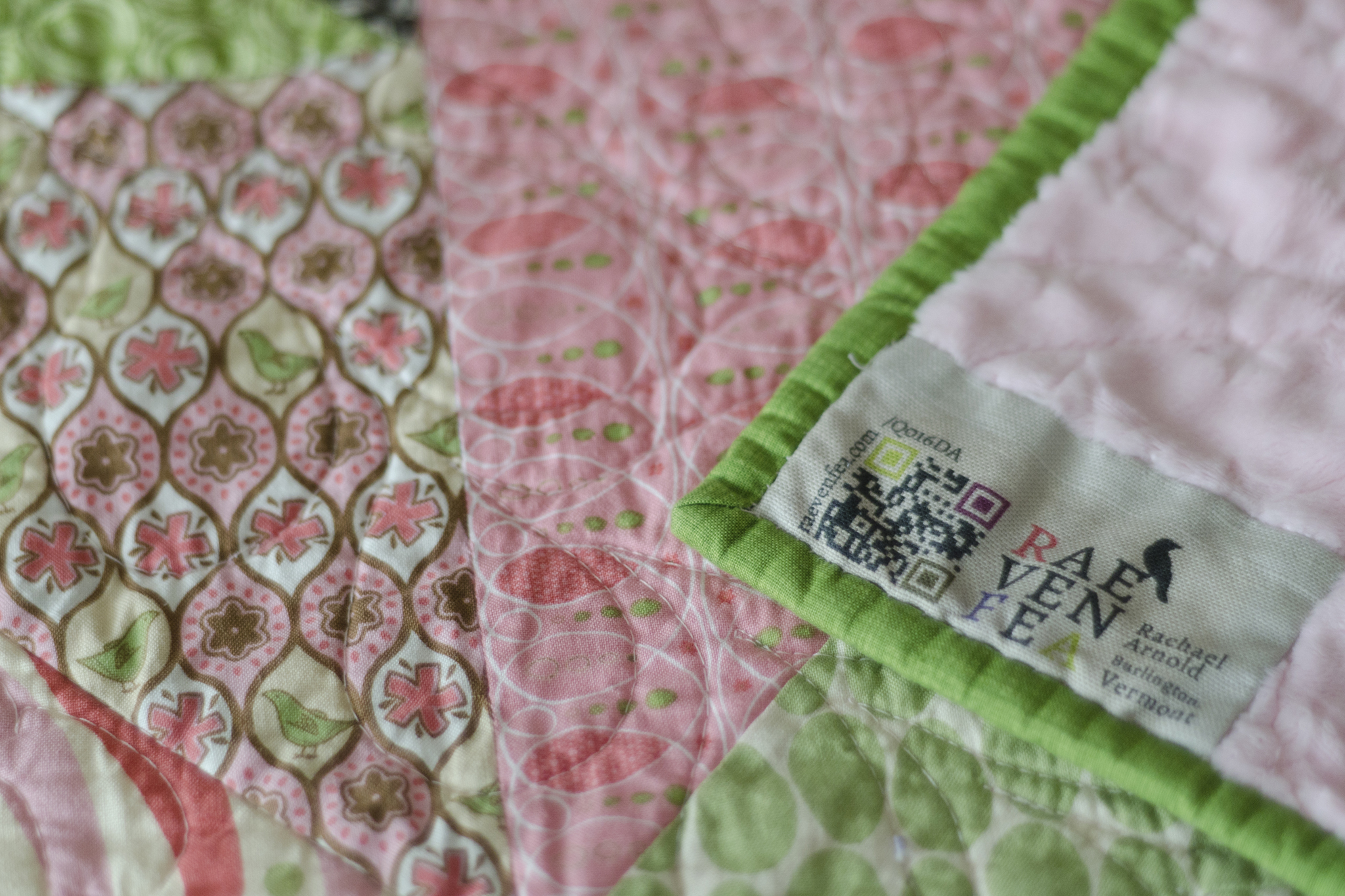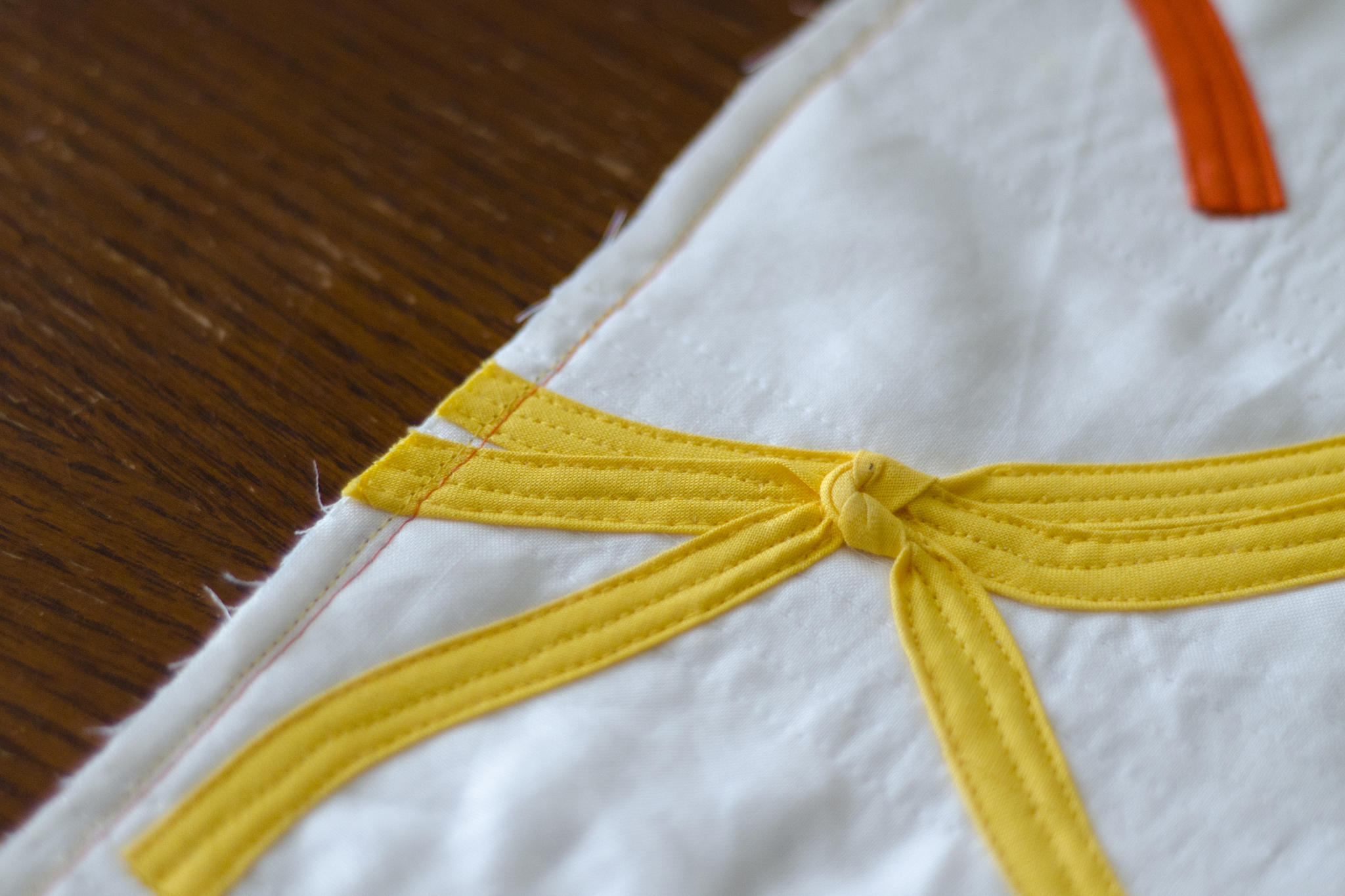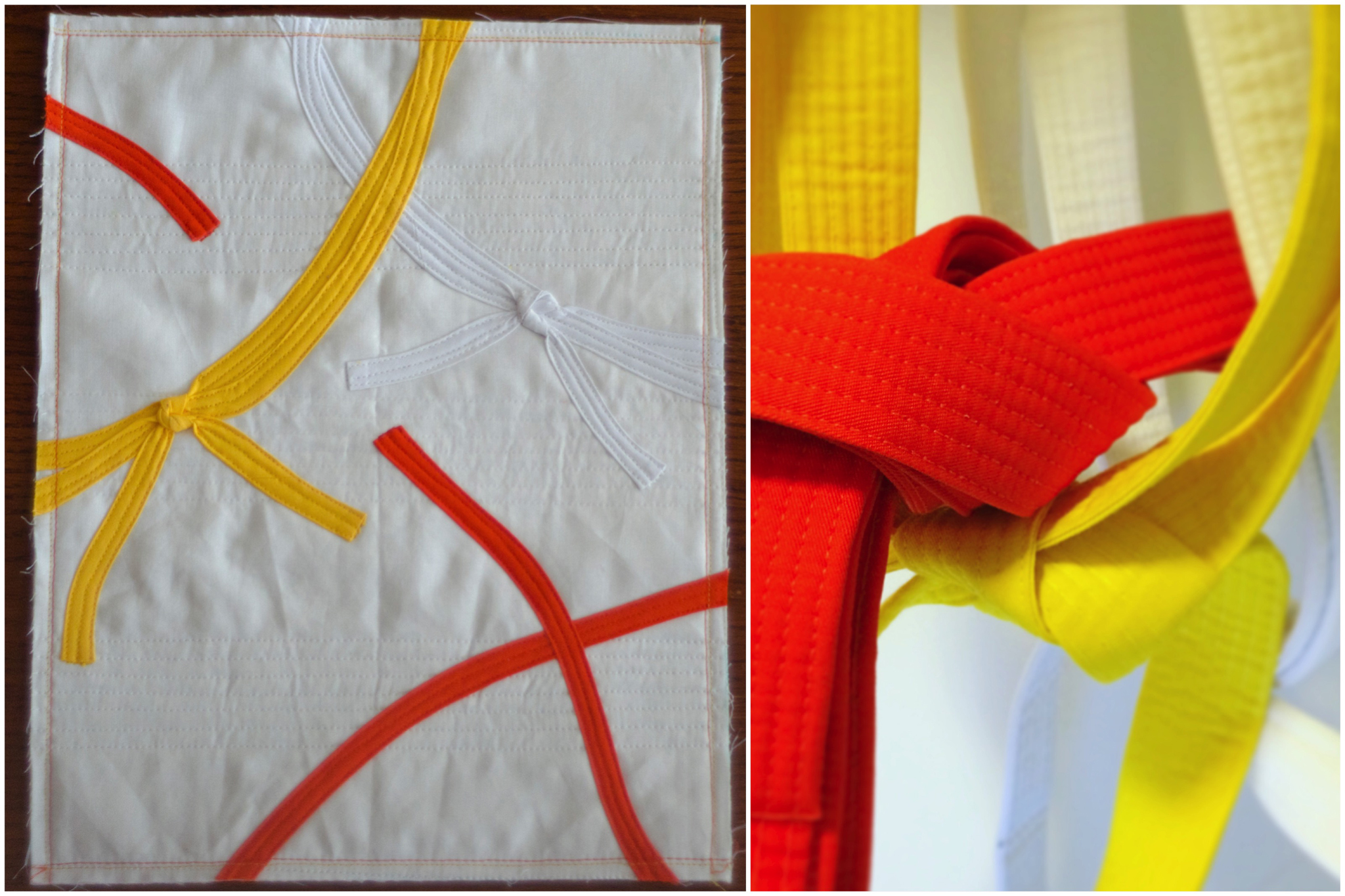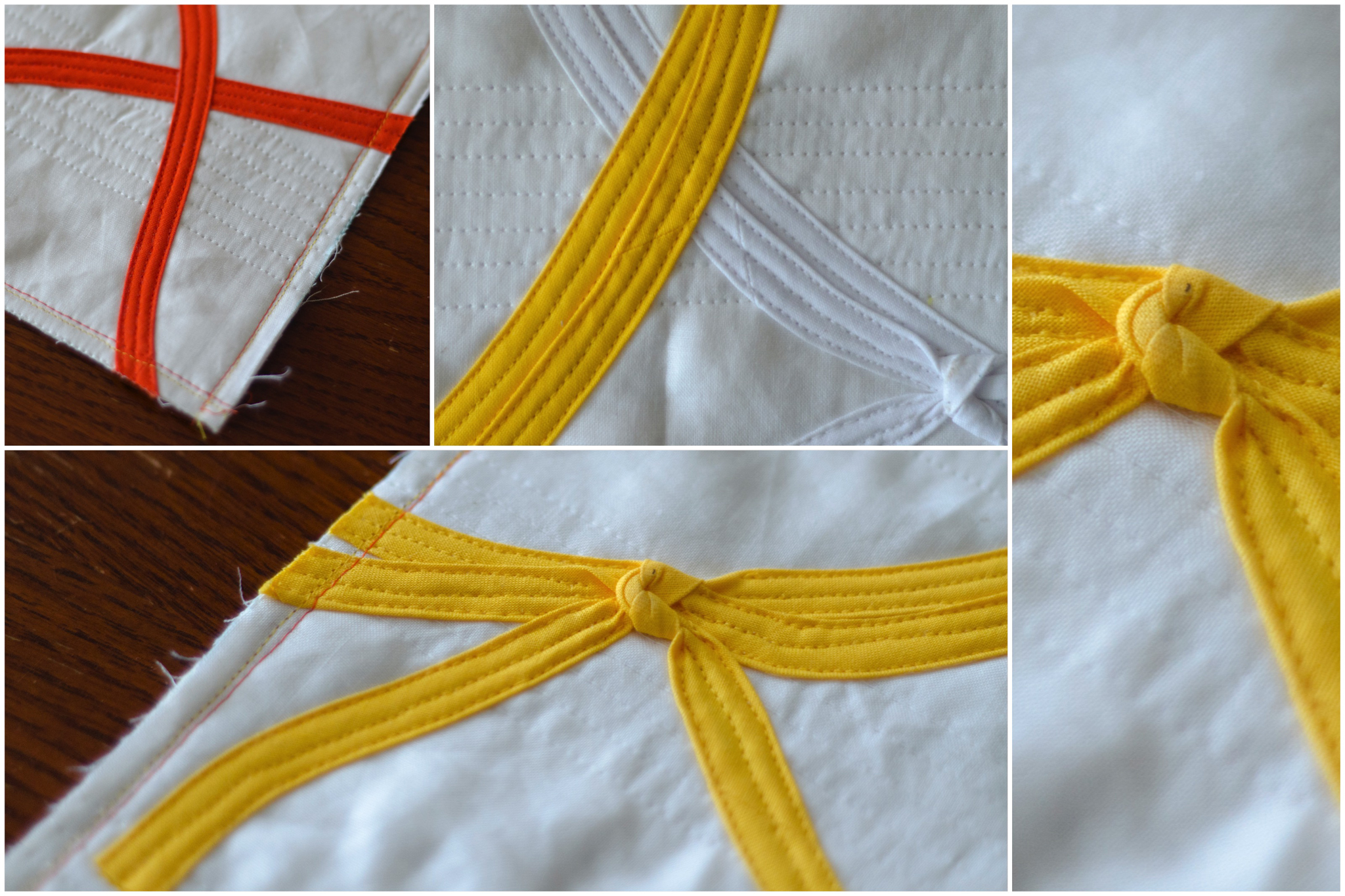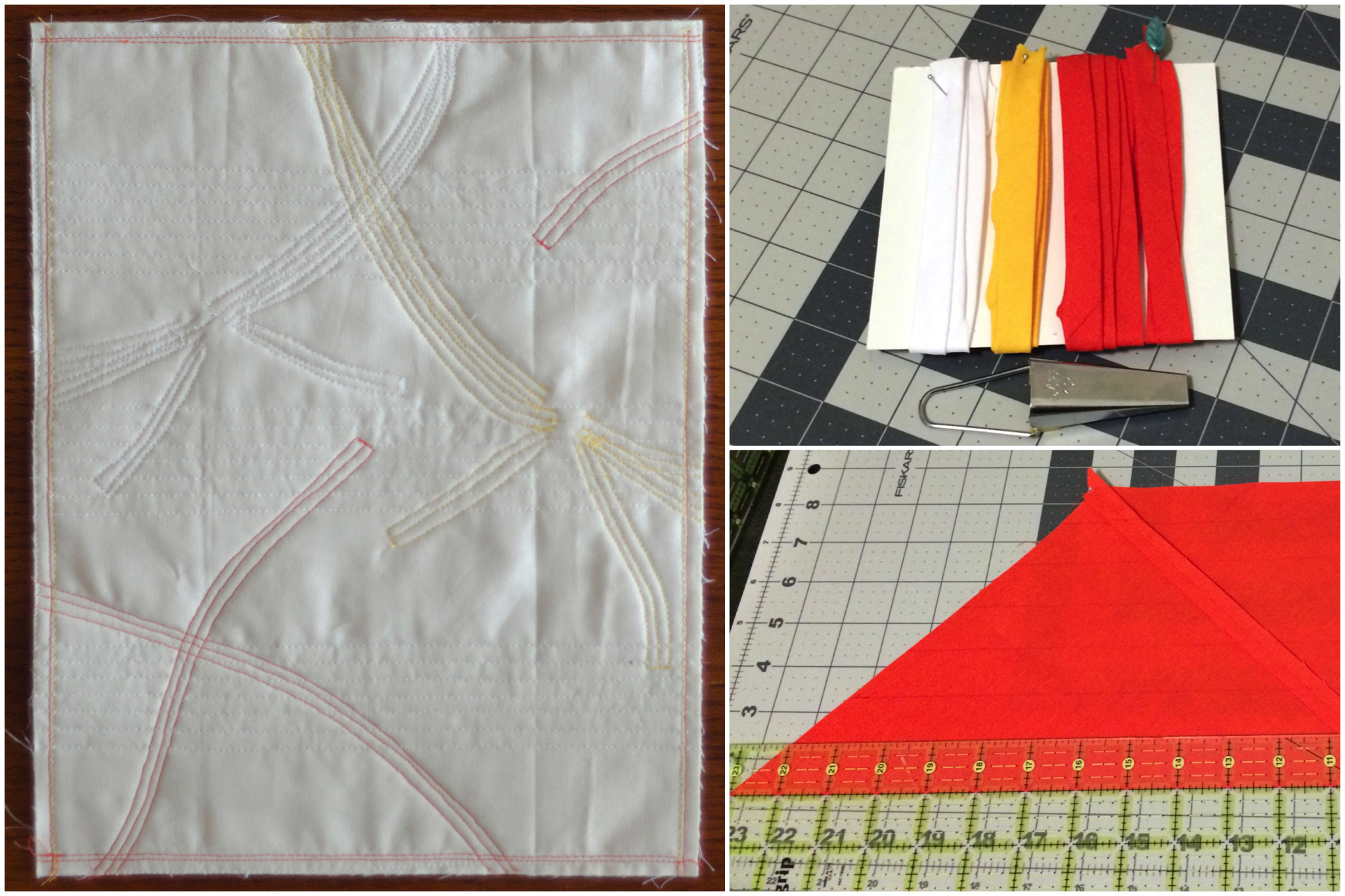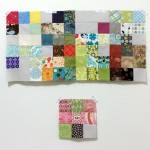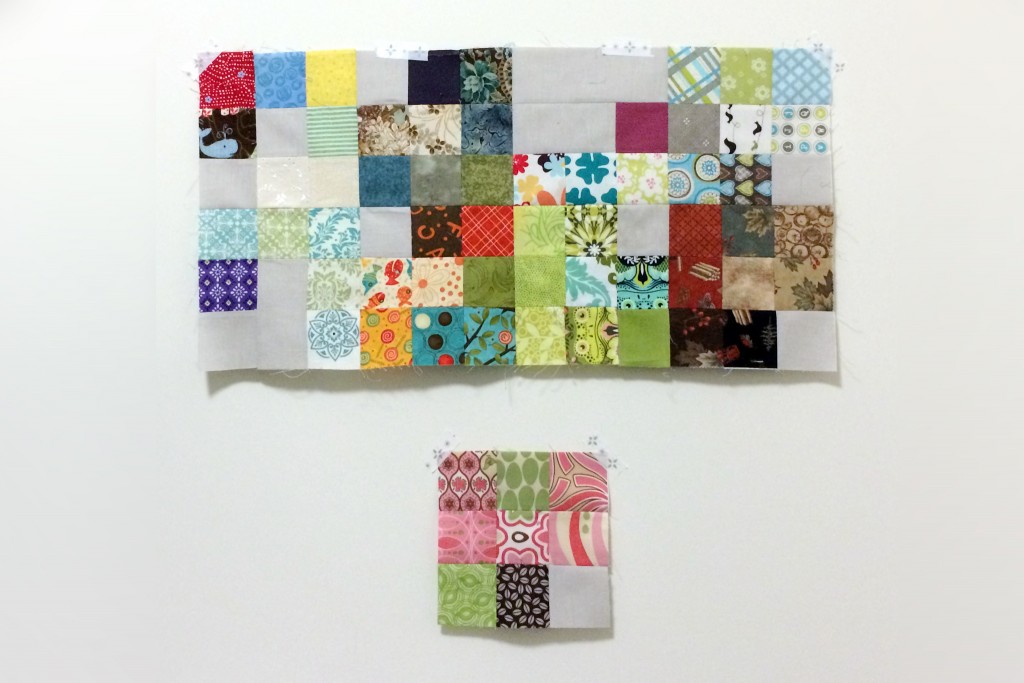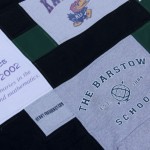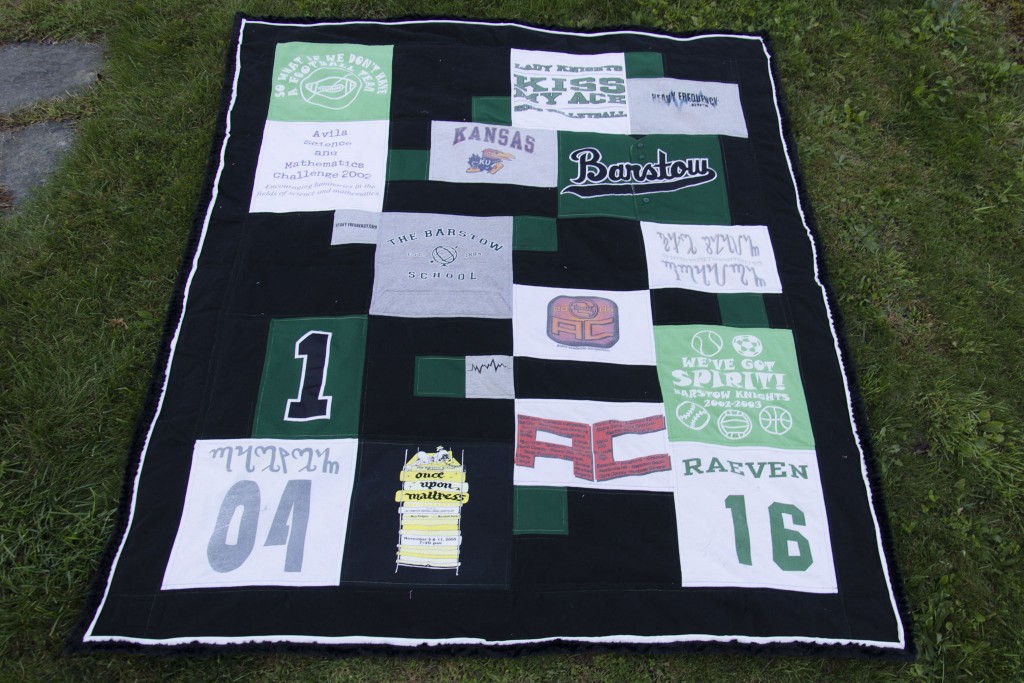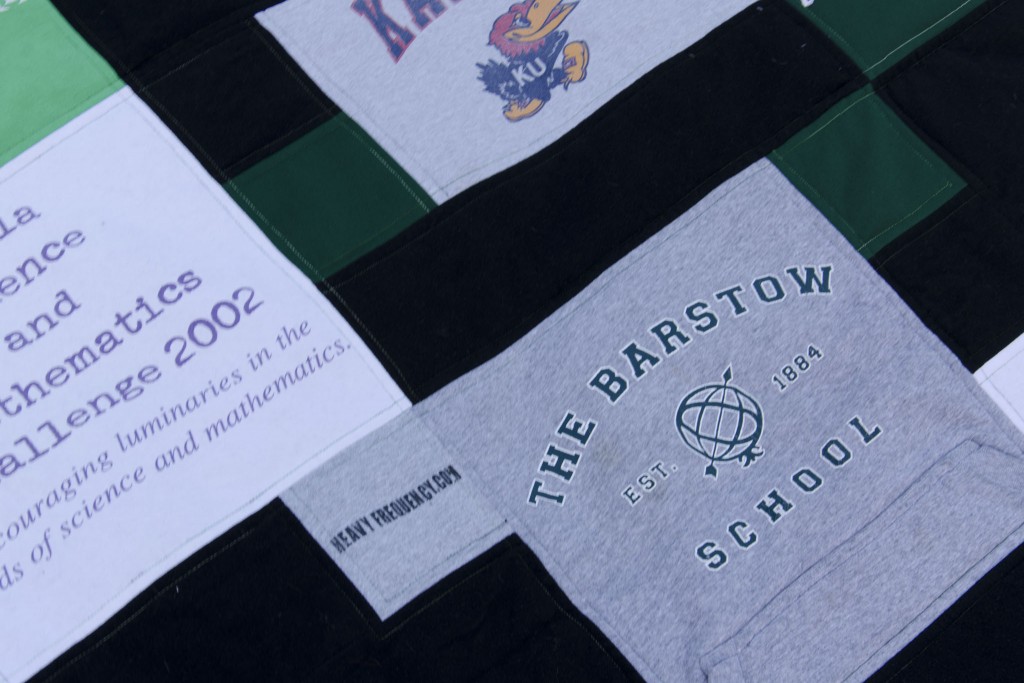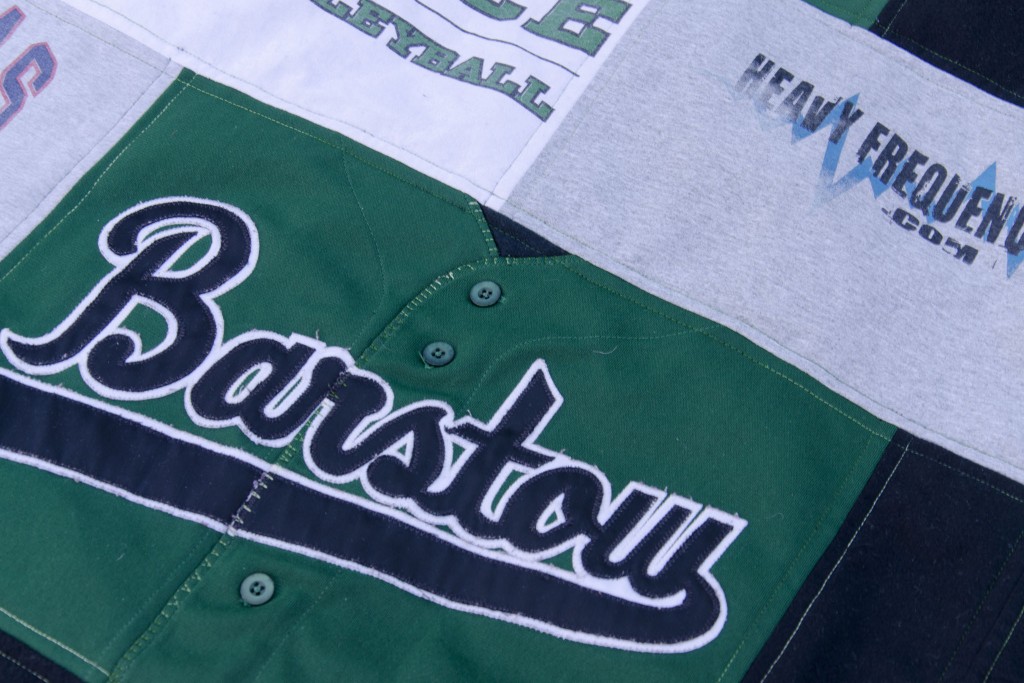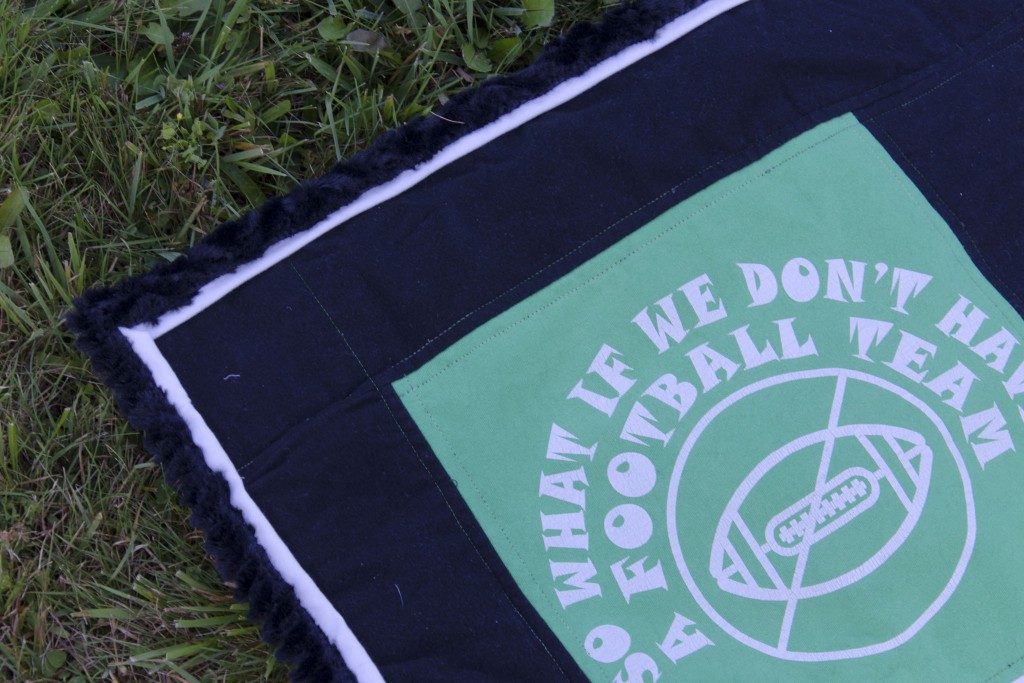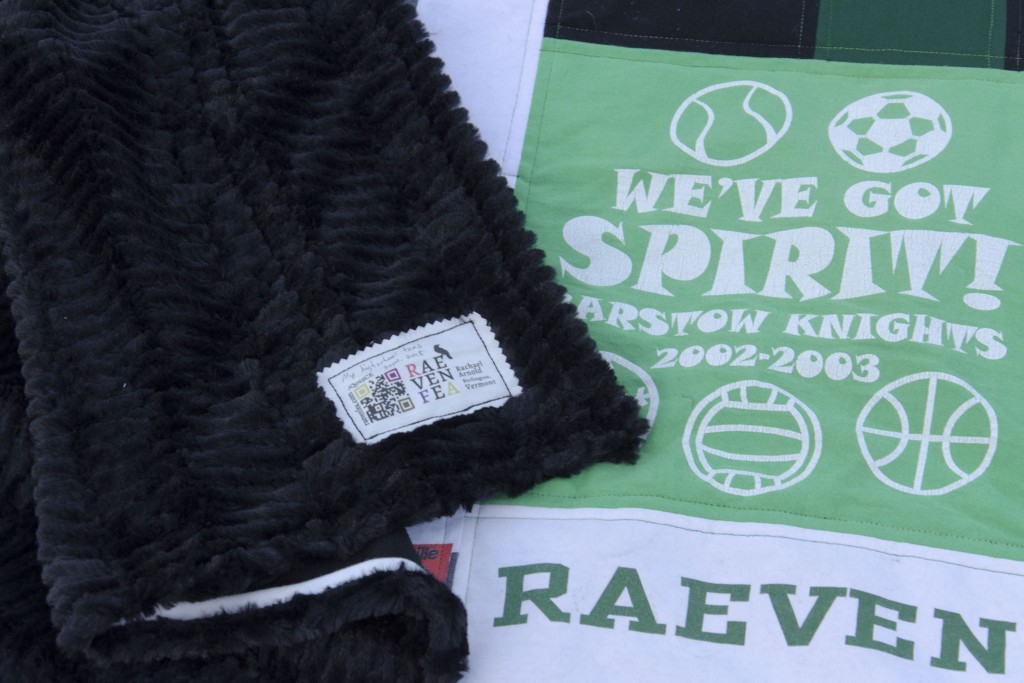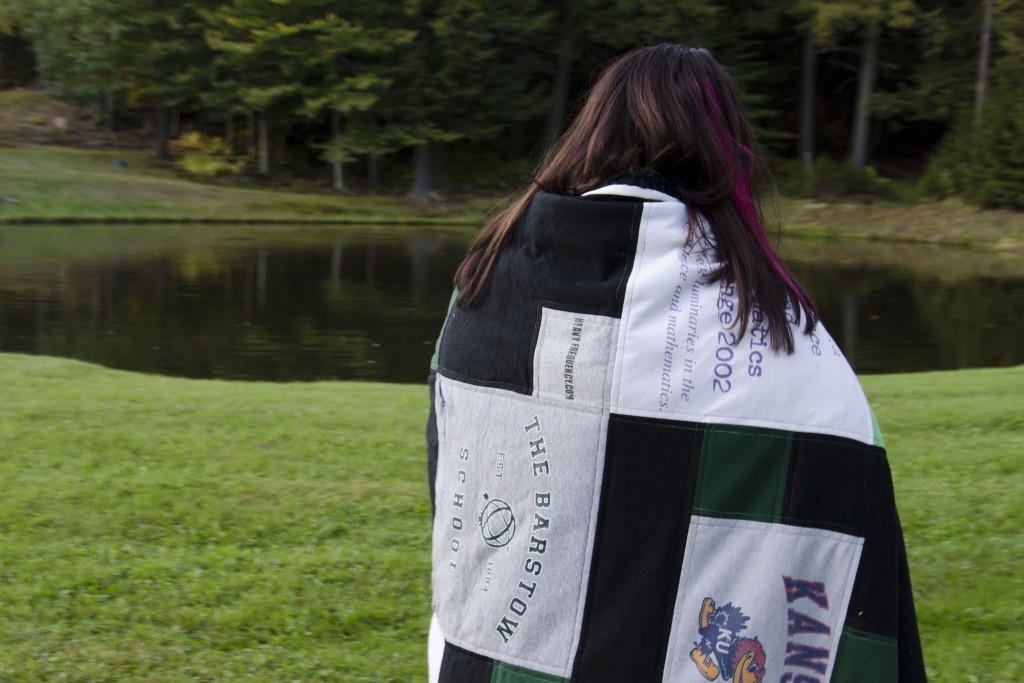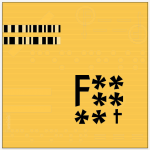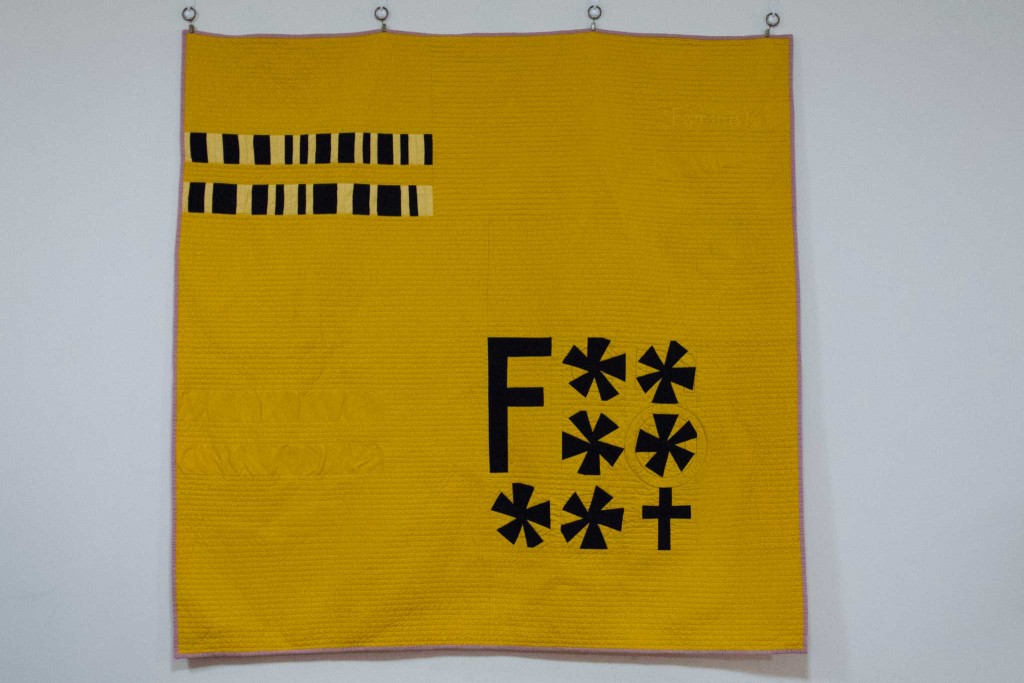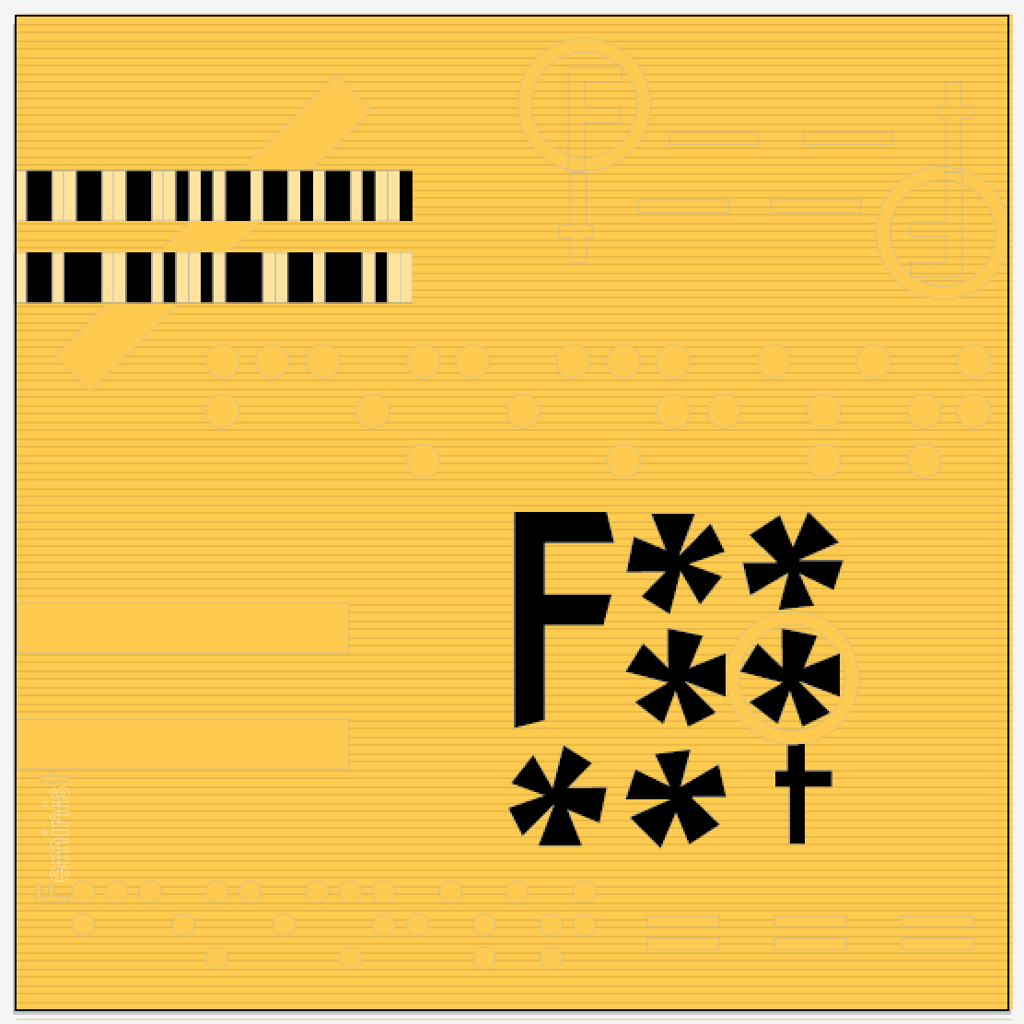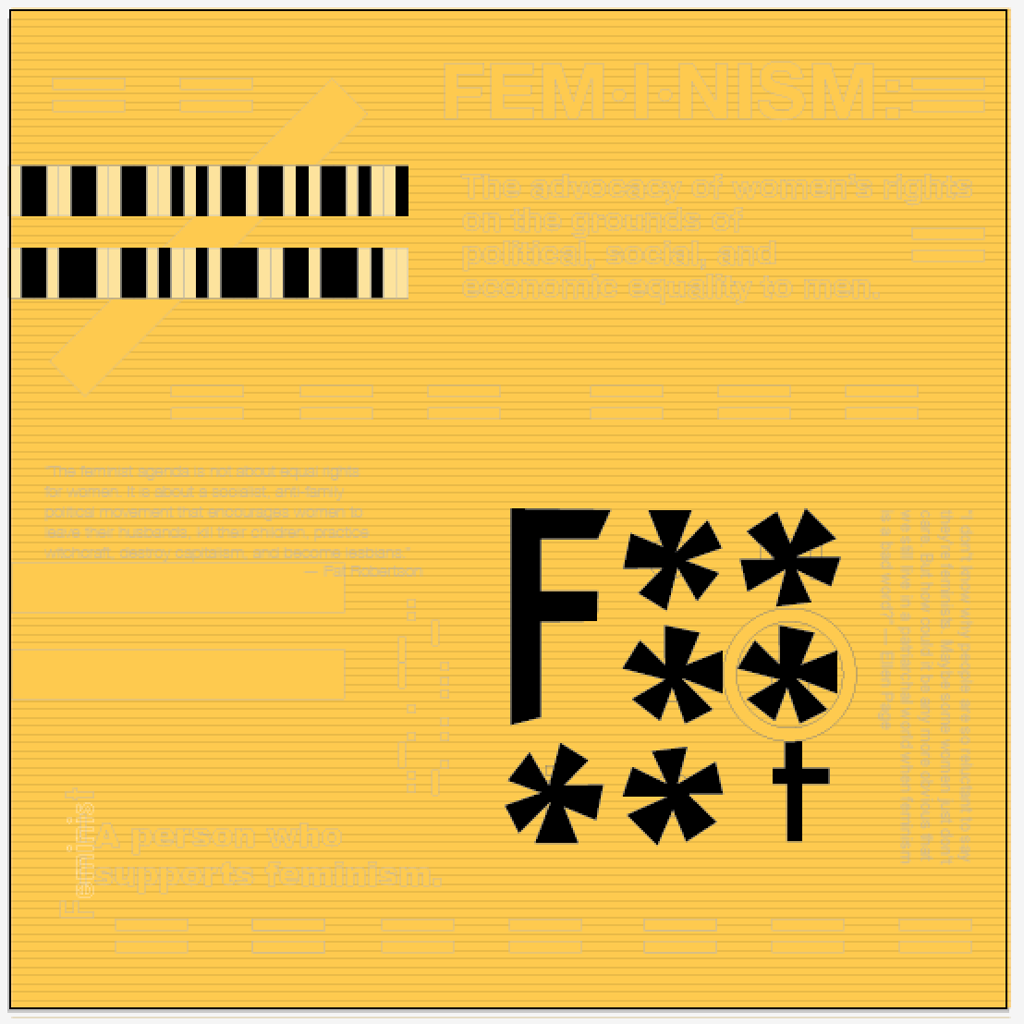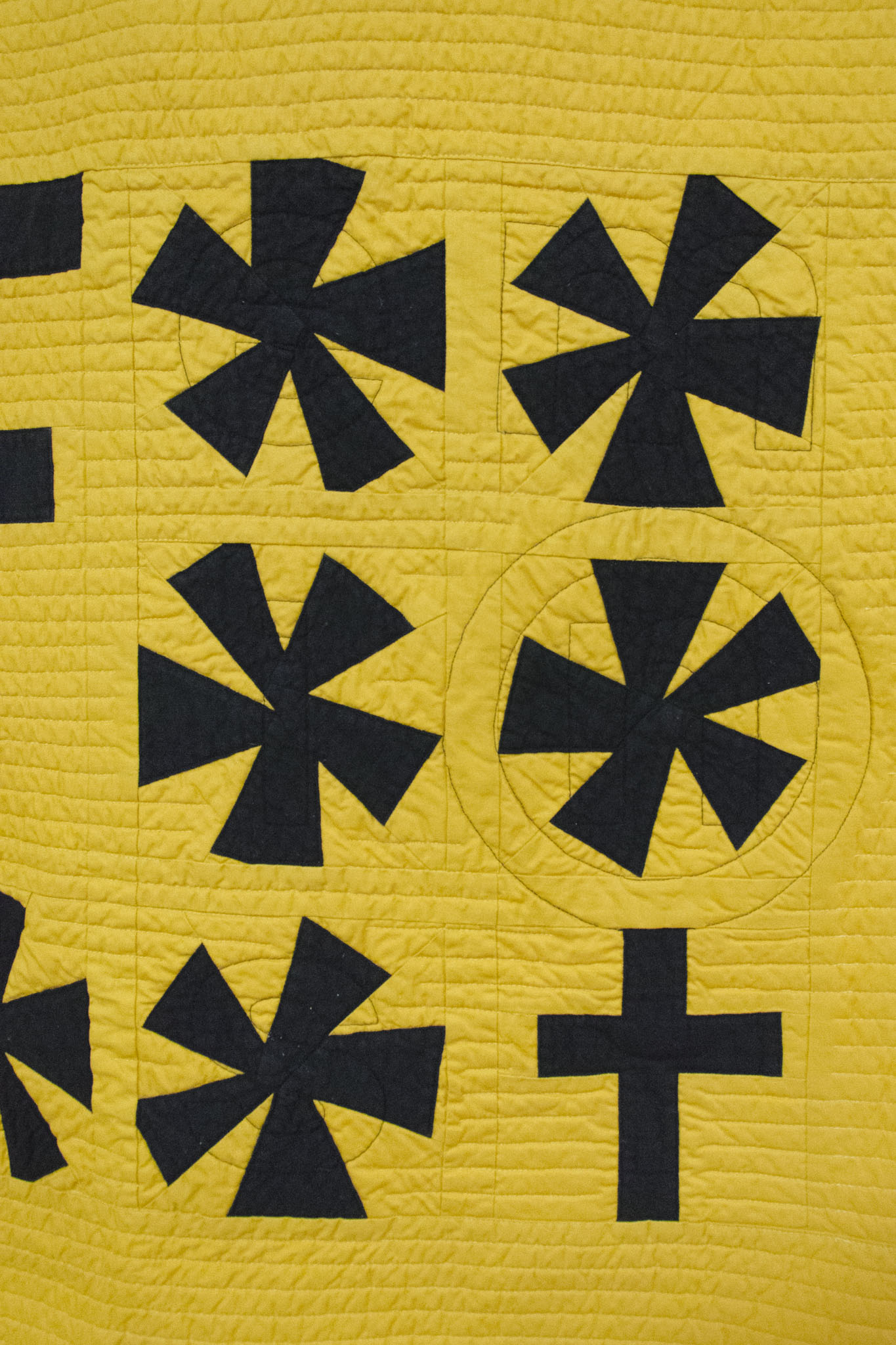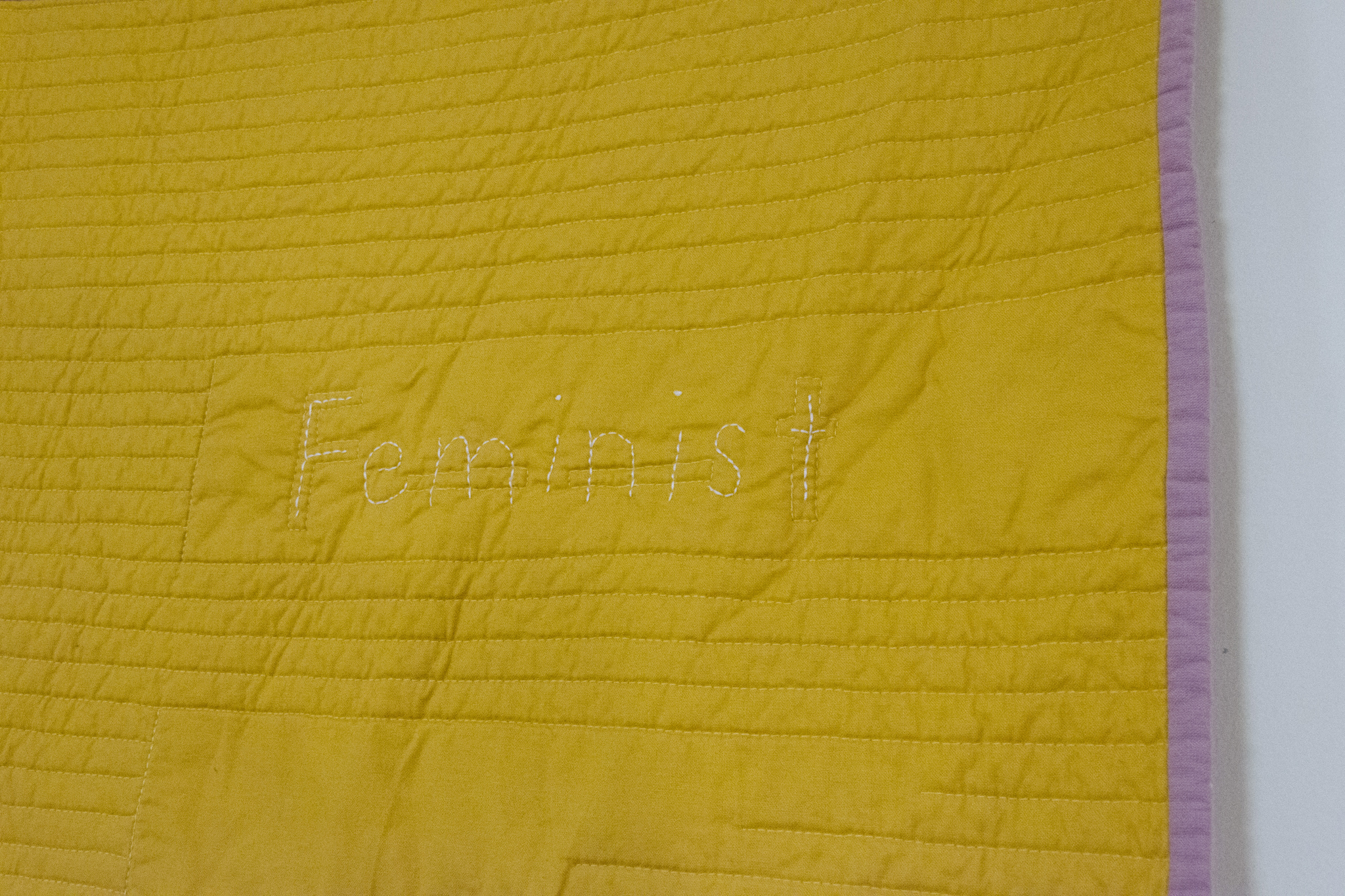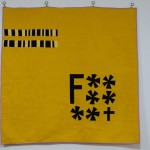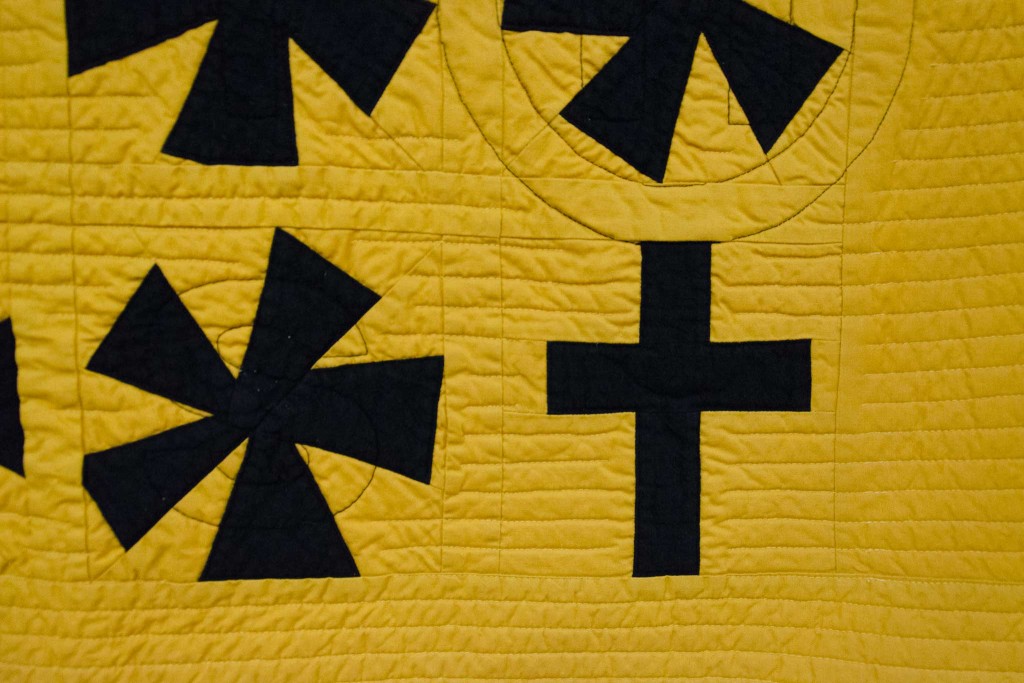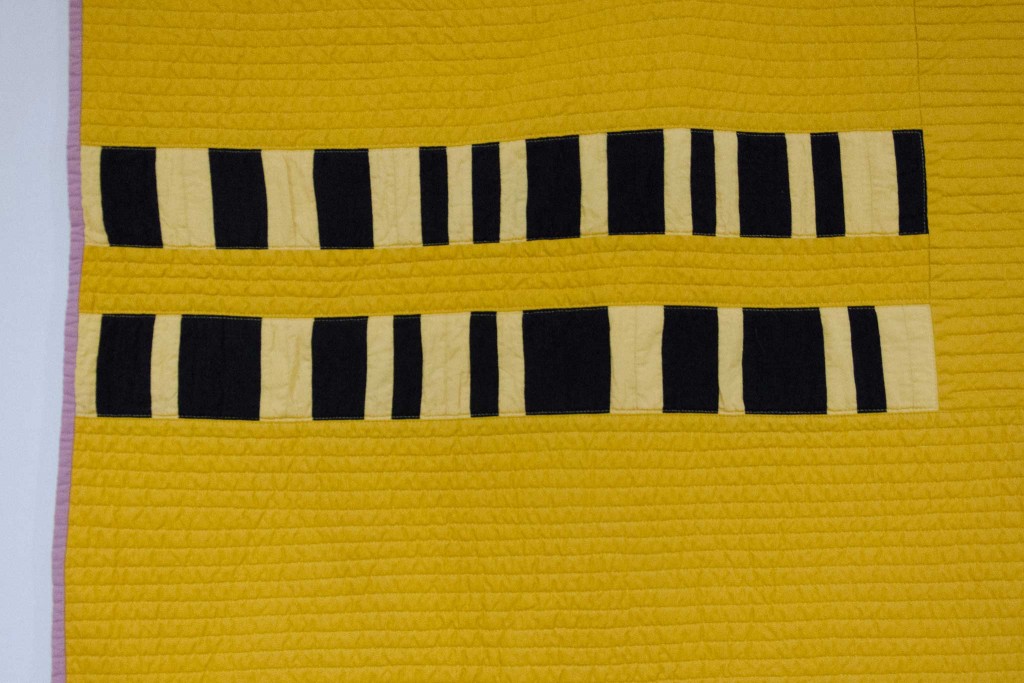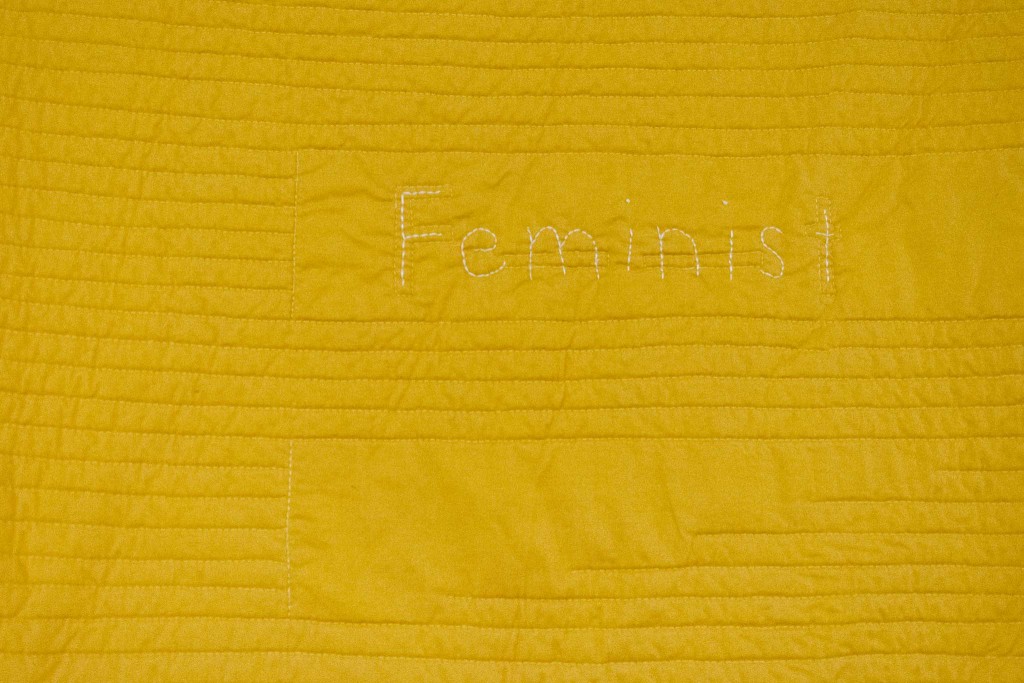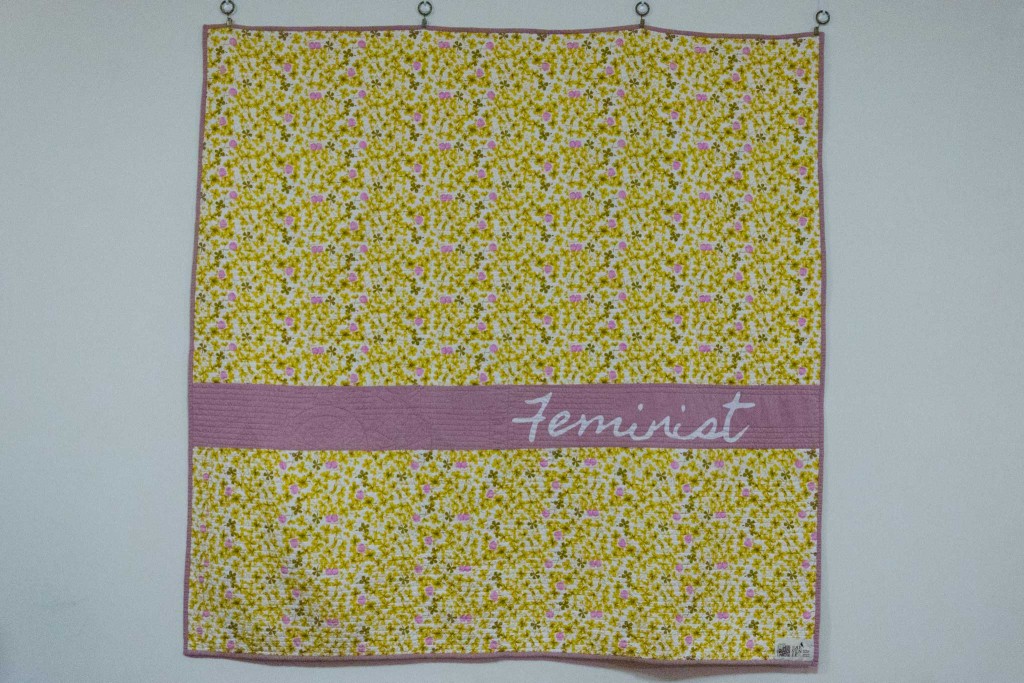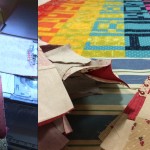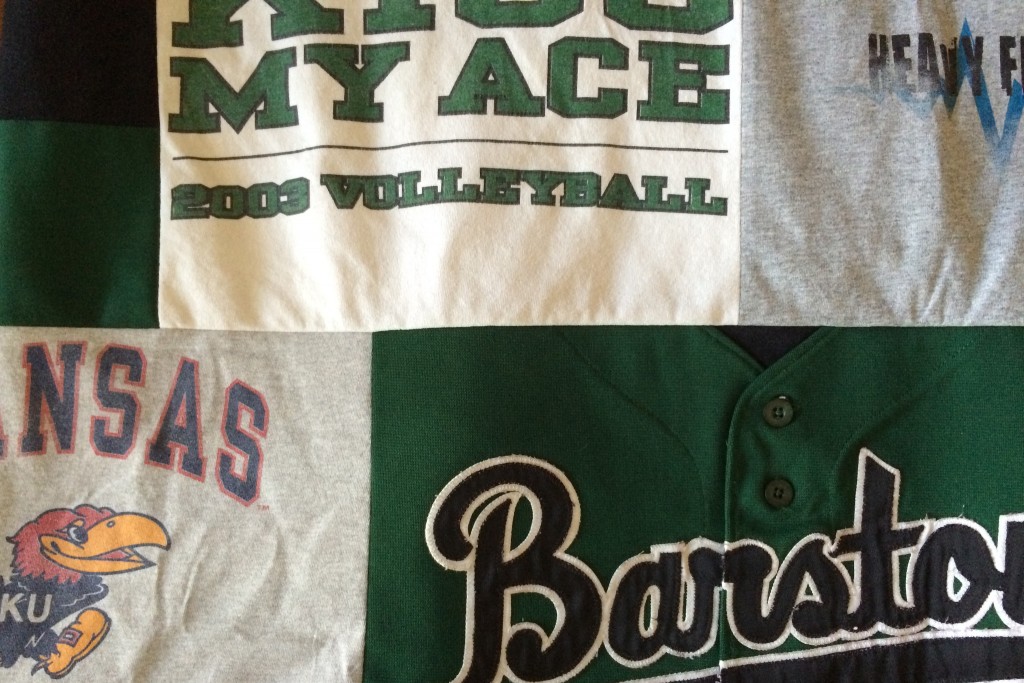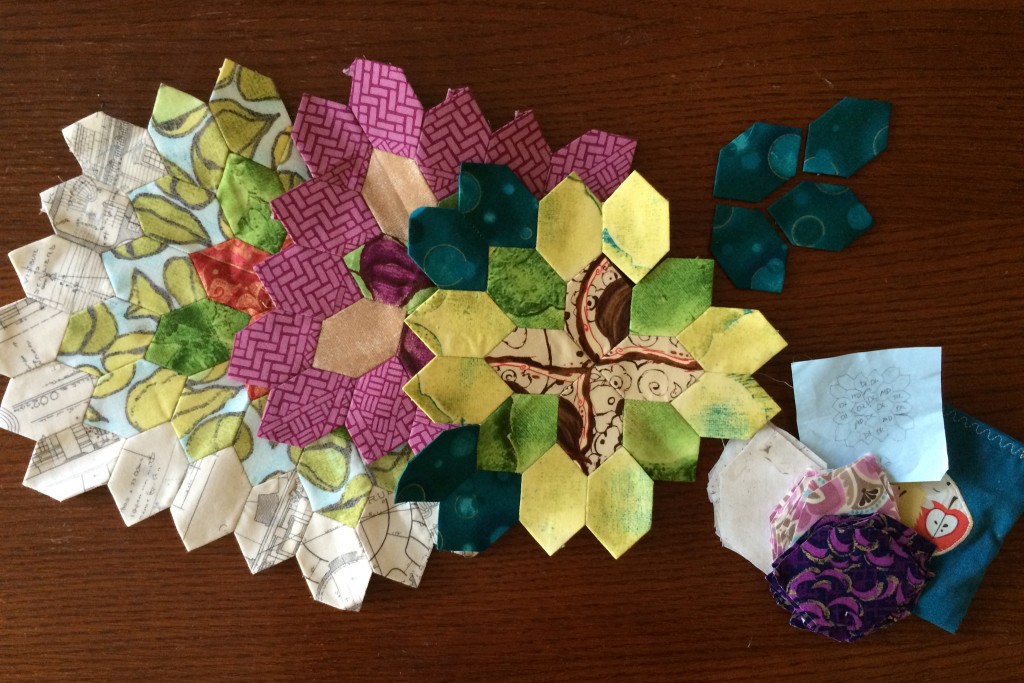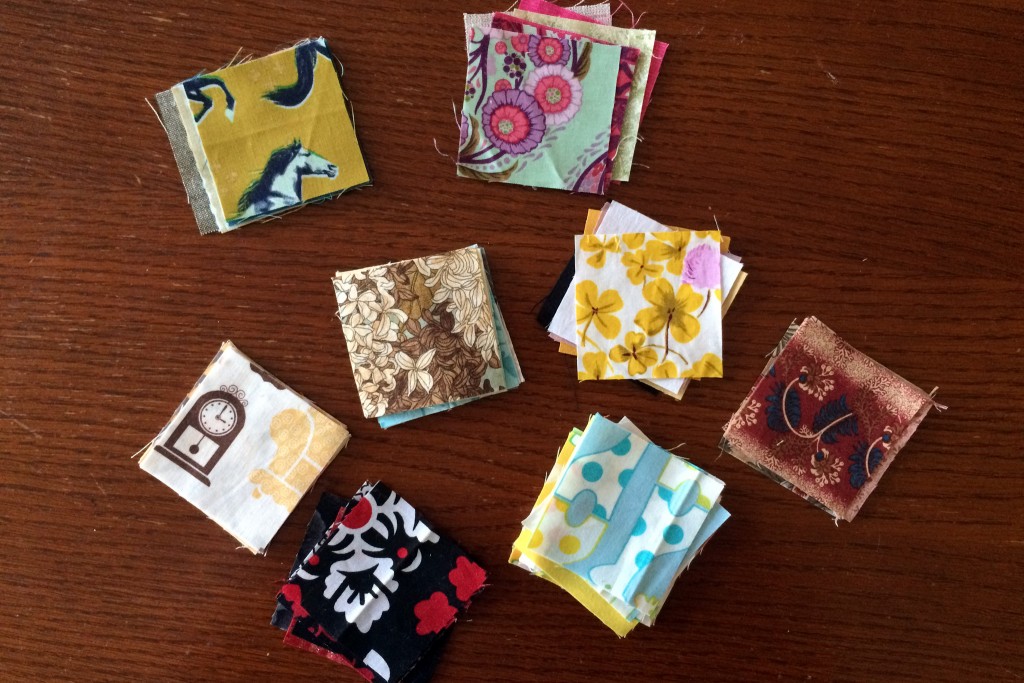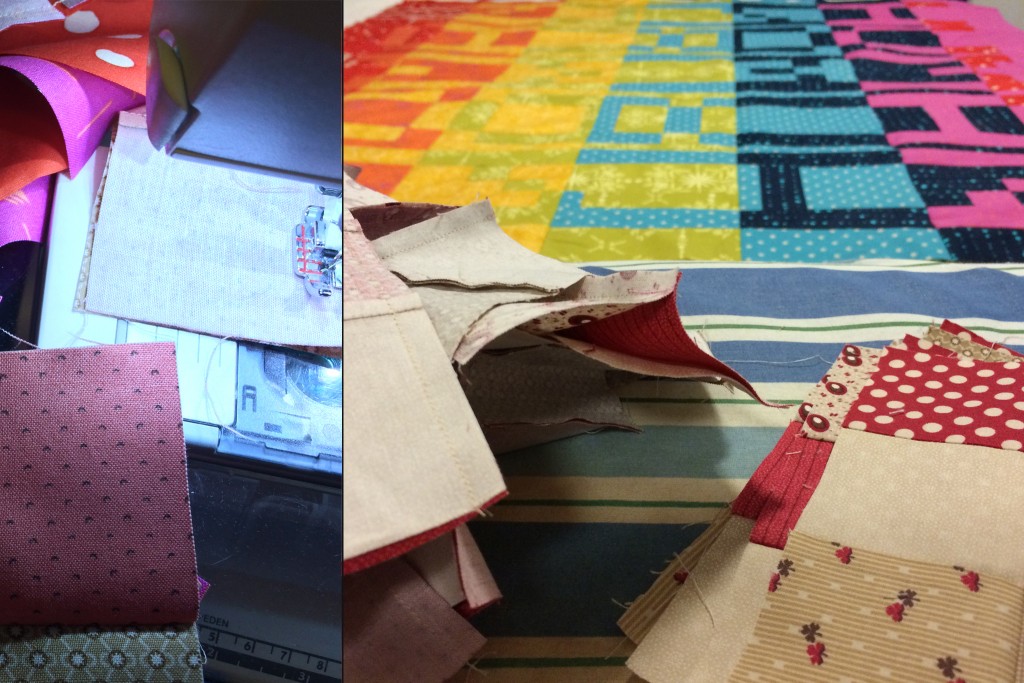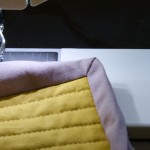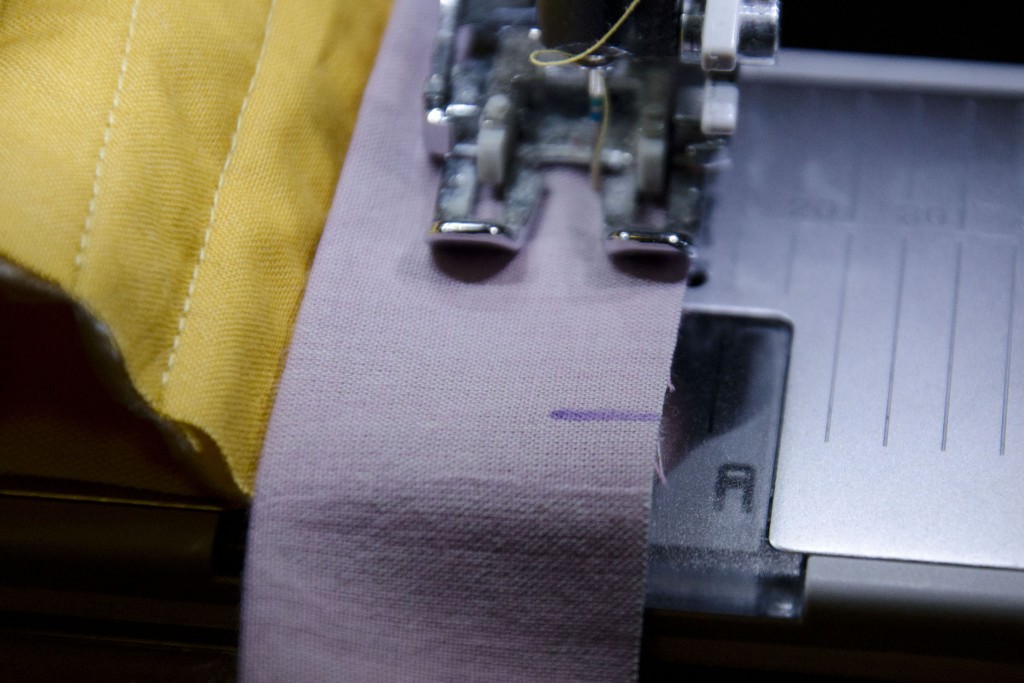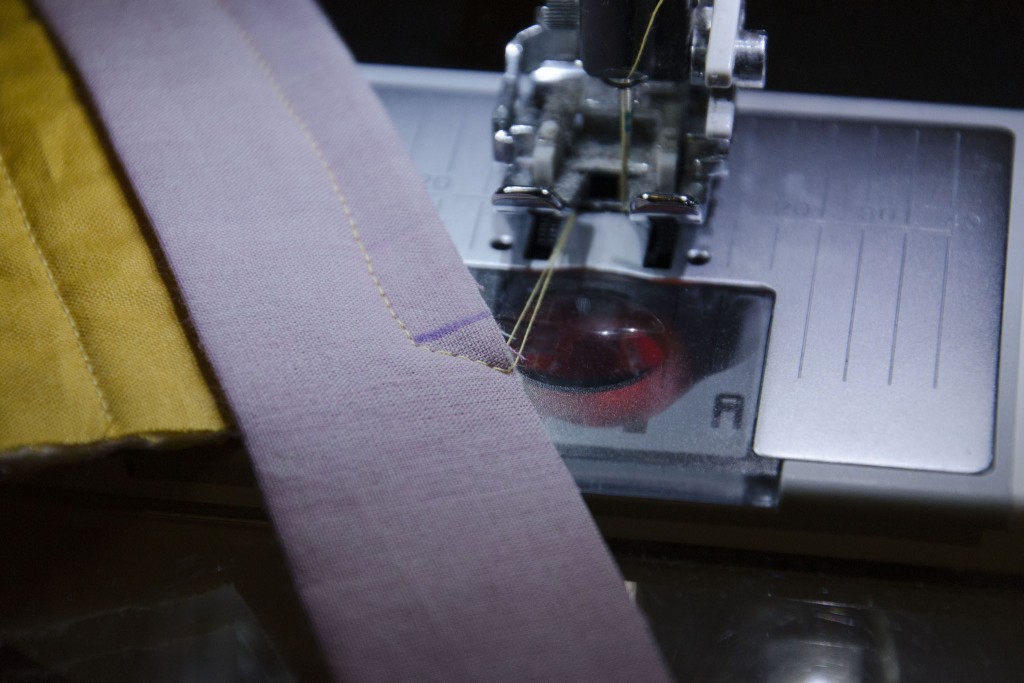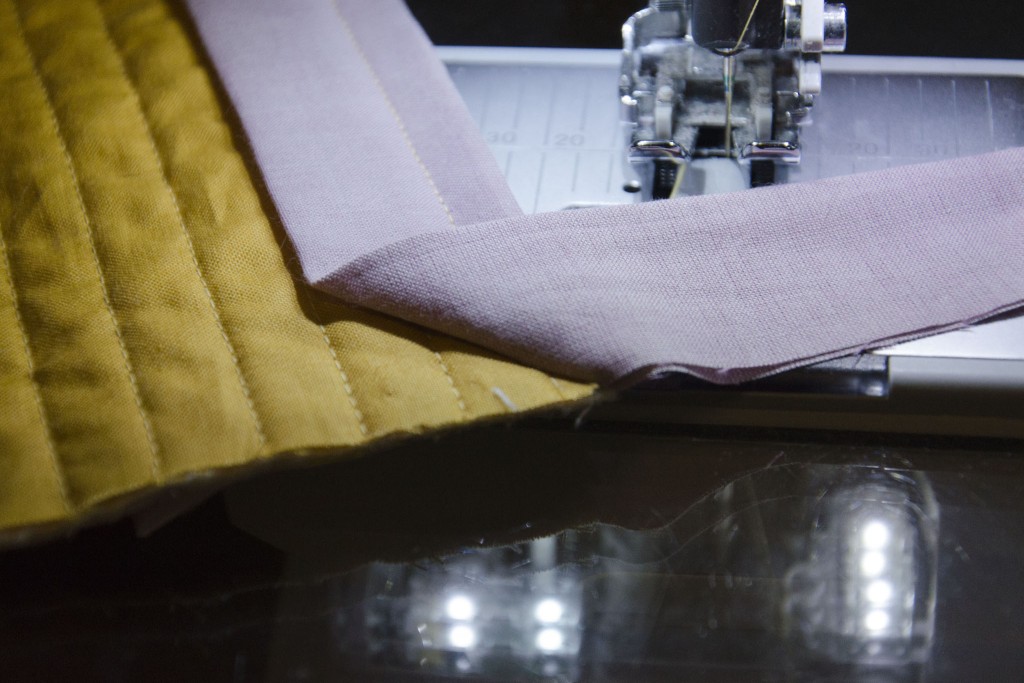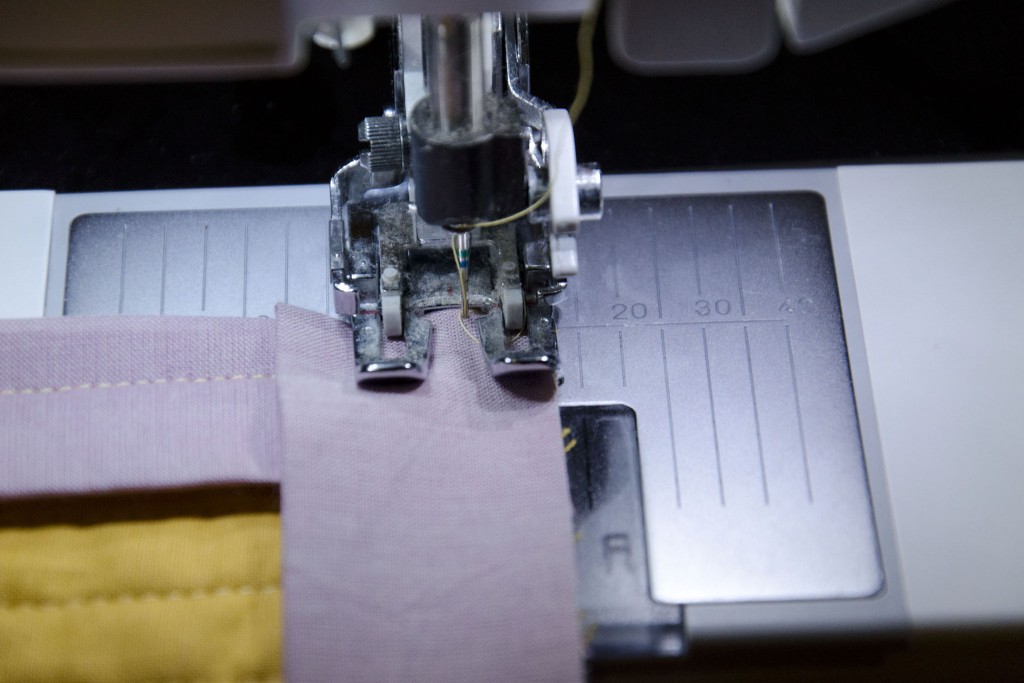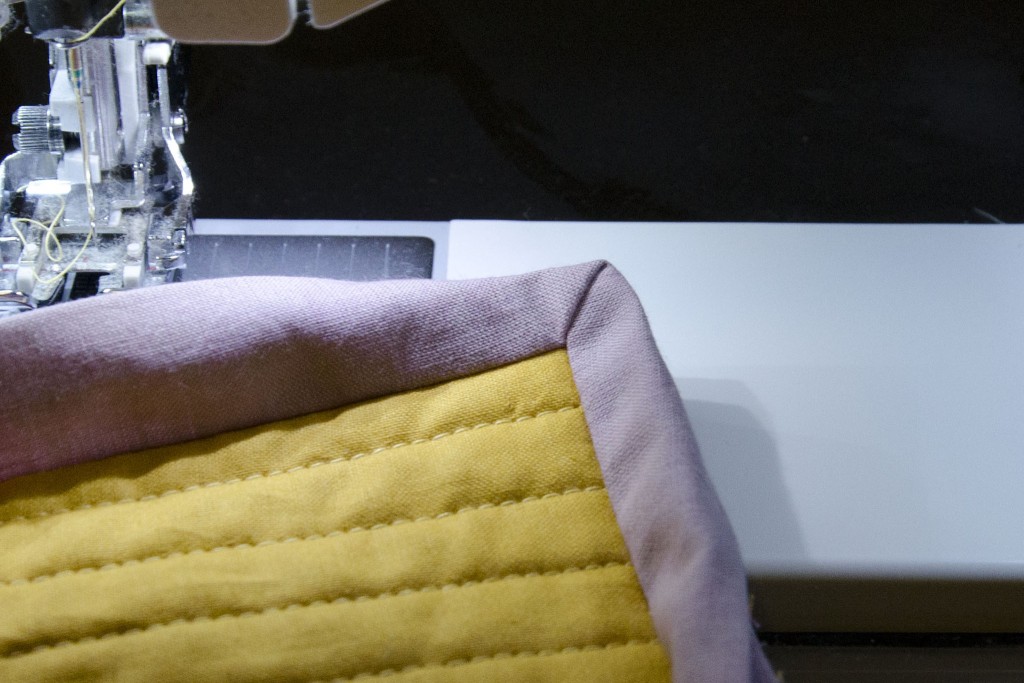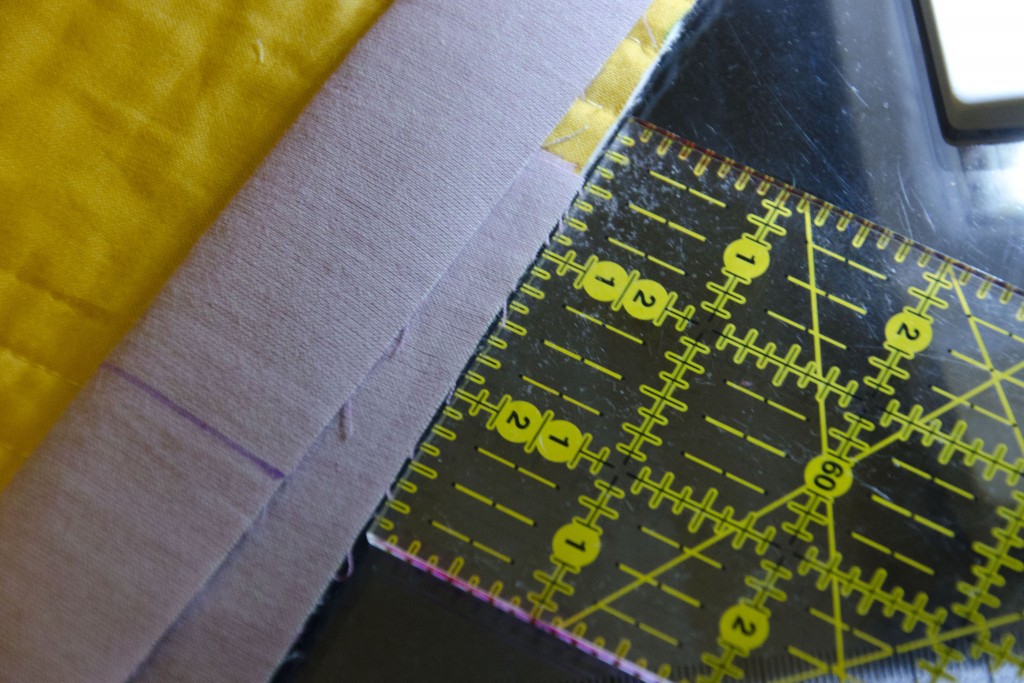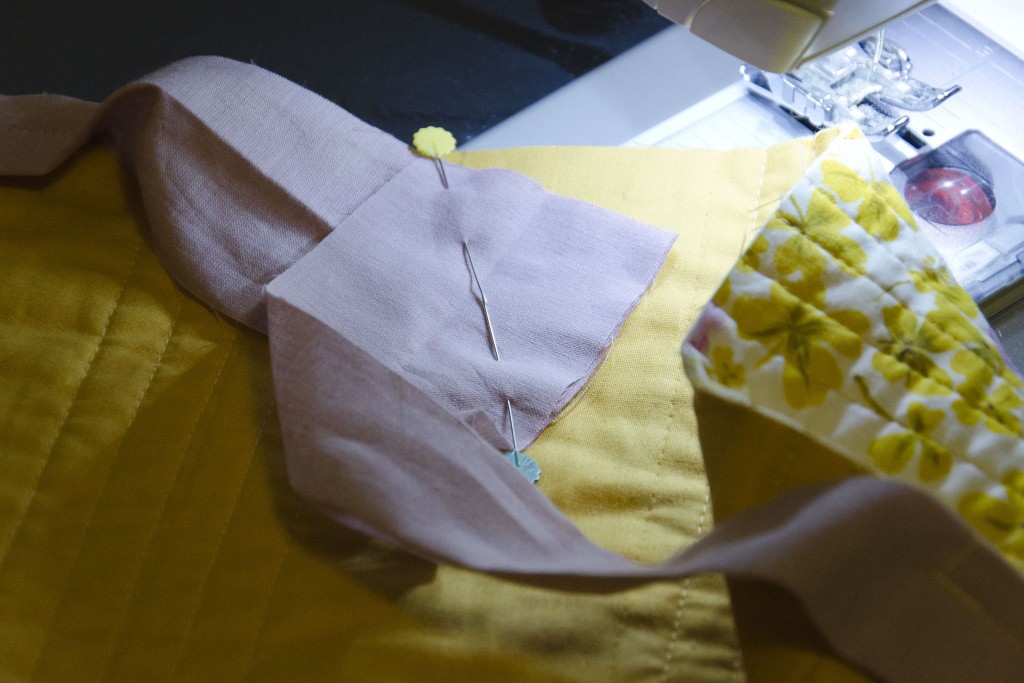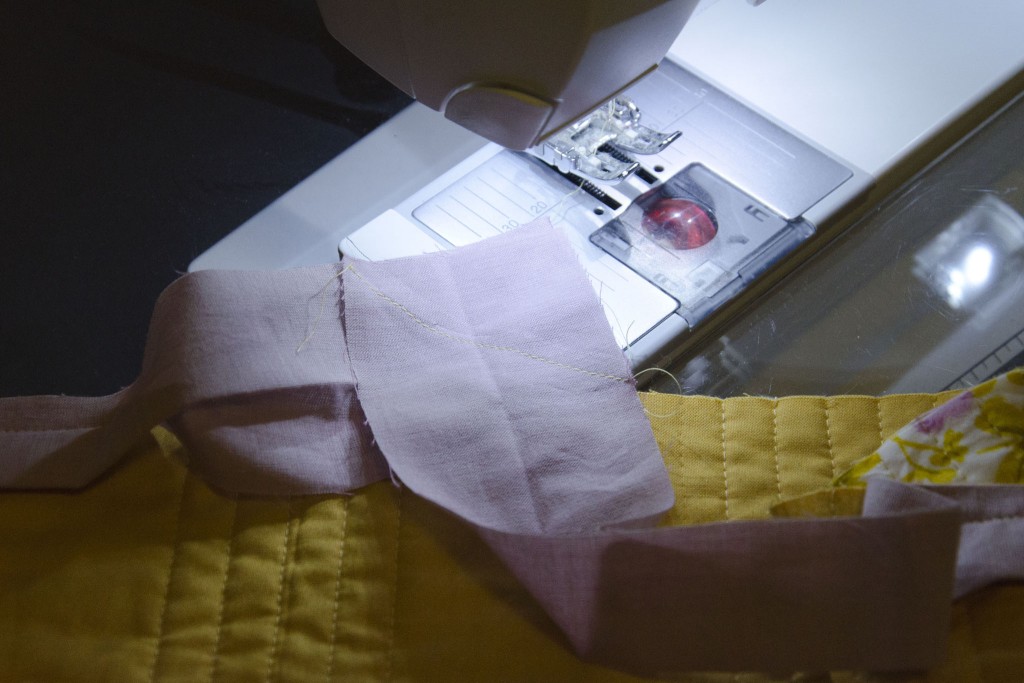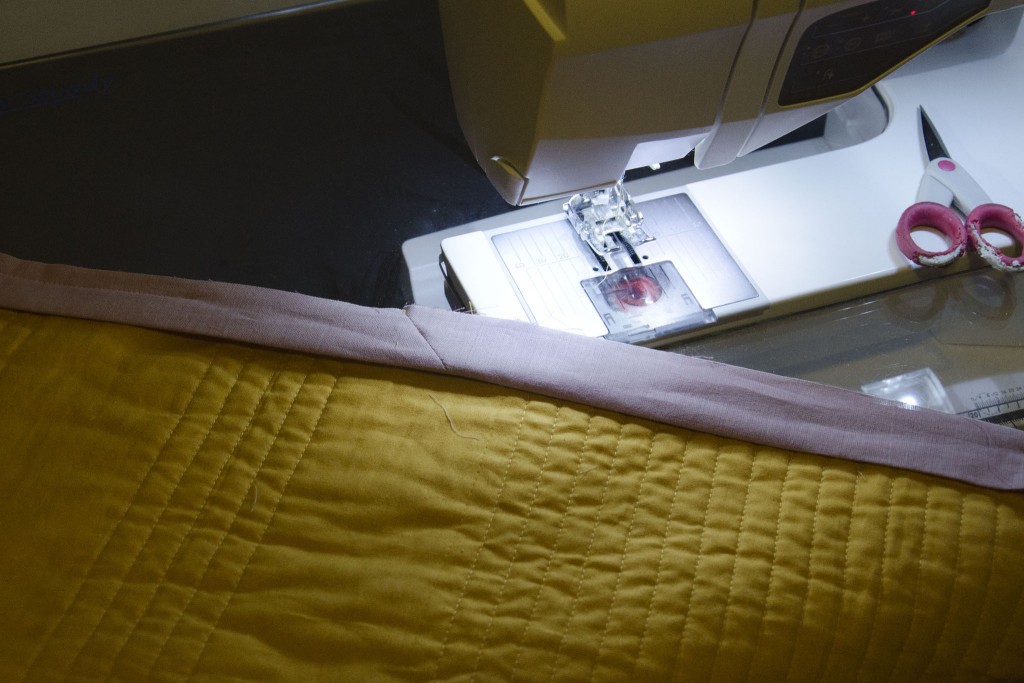Society Label Template
While in the middle of working on the F Word Quilt (Feminist), I thought a lot about labels, discrimination, and qualifiers. Sometime during the experience of sewing the myriad straight lines of quilting and trying to puzzle out how to do quilted lettering, I came up with the idea for this quilt.
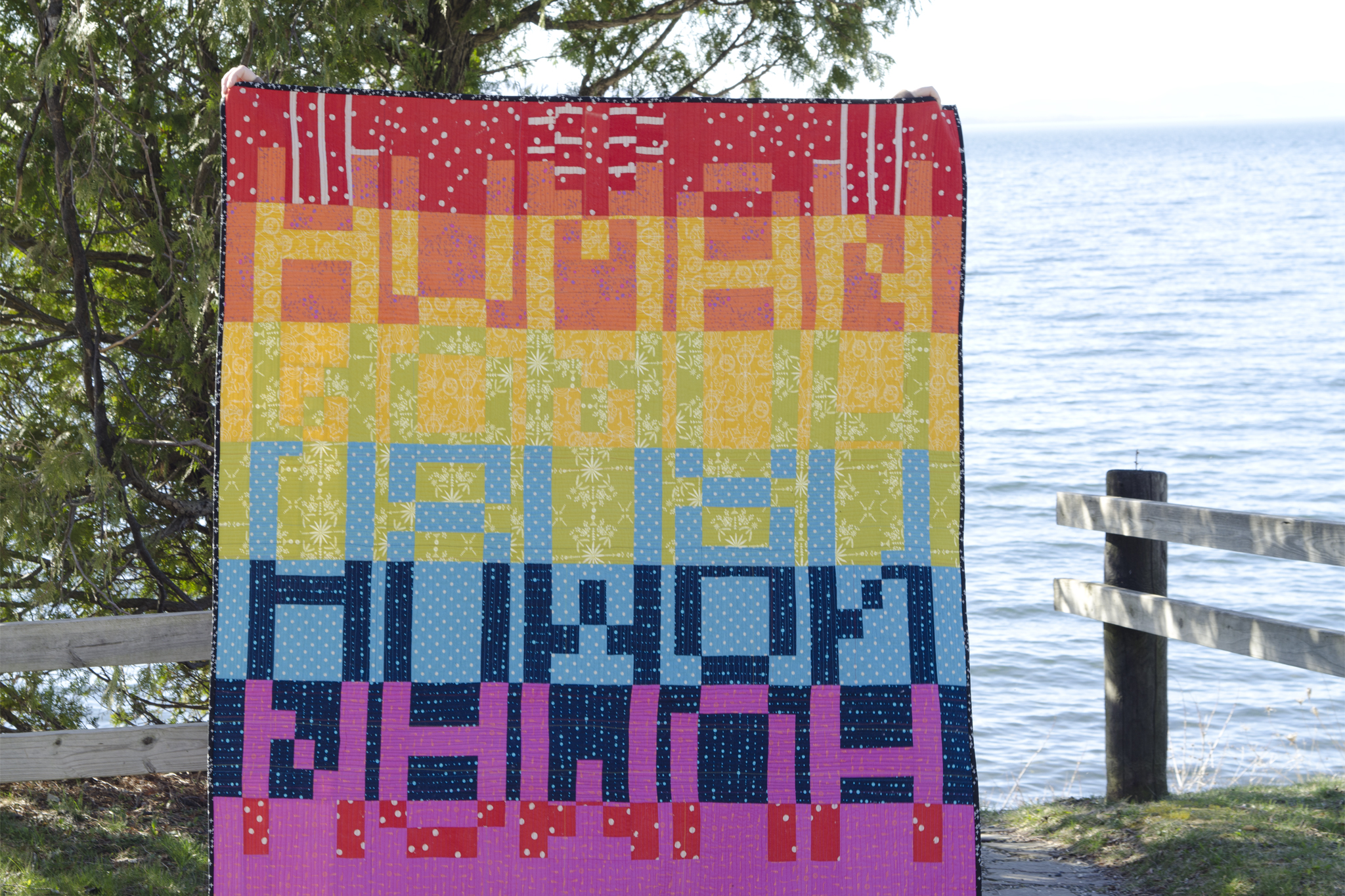
In between piecing what I thought was the back of this quilt and preparing a wholecloth front, I changed my mind about what was what and how I should do the front (back?). The black-on-white embroidery from the wholecloth edge was cut out and pieced into many shades of gray and a few leftovers from the front. The original embroidery was meant to parody the instruction text on inkjet printer adhesive label sheets, with the original quilting plan to mimic those label outlines and various words one might print to label someone. Now it’s fractured.
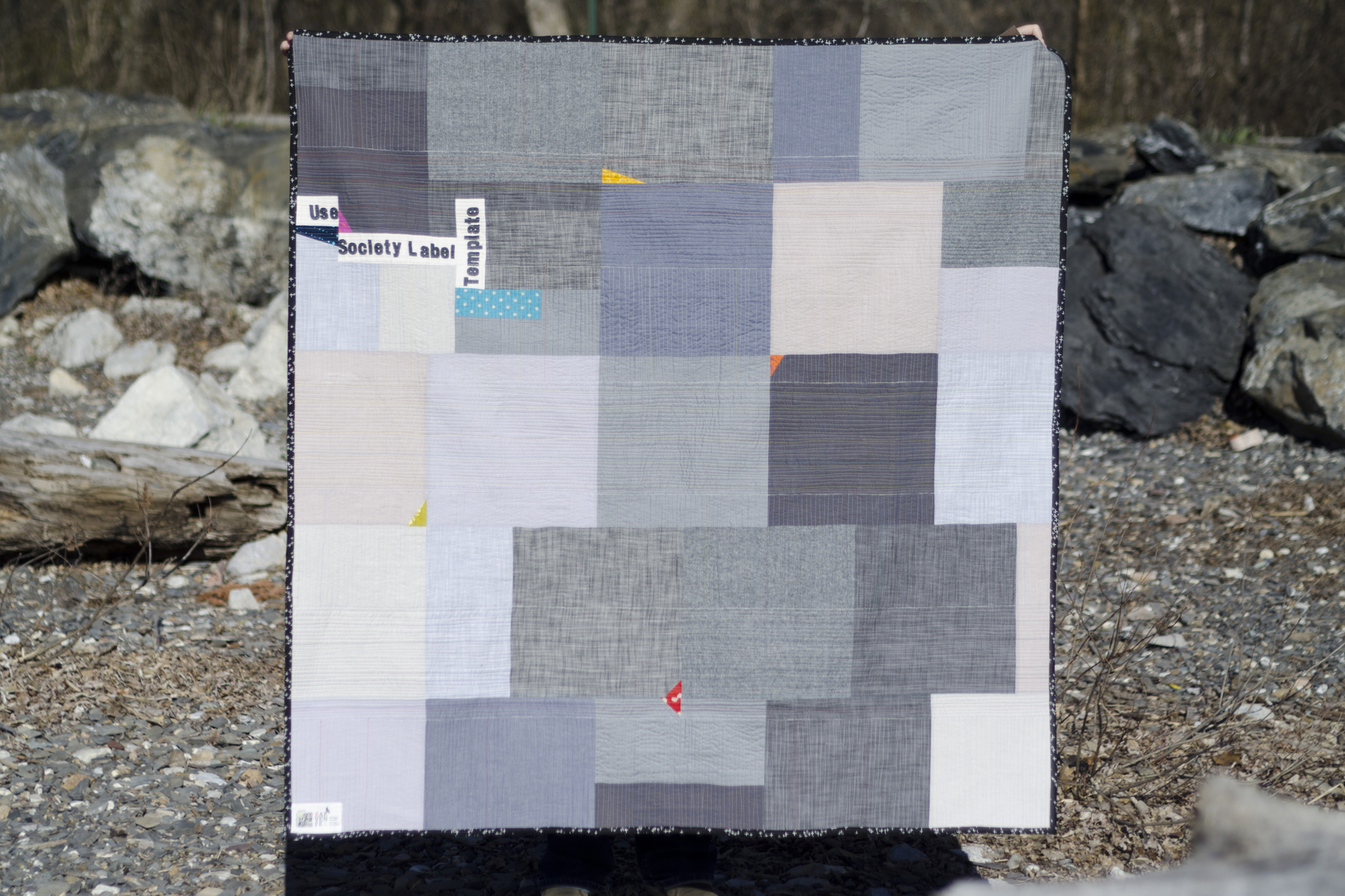
The other side is pieced, based on a pixelated font reading ‘human’. It’s busy by design, the words flipped and mirrored, blending between sections, flowing through the rainbow. There’s no right side up or up side down on this side.
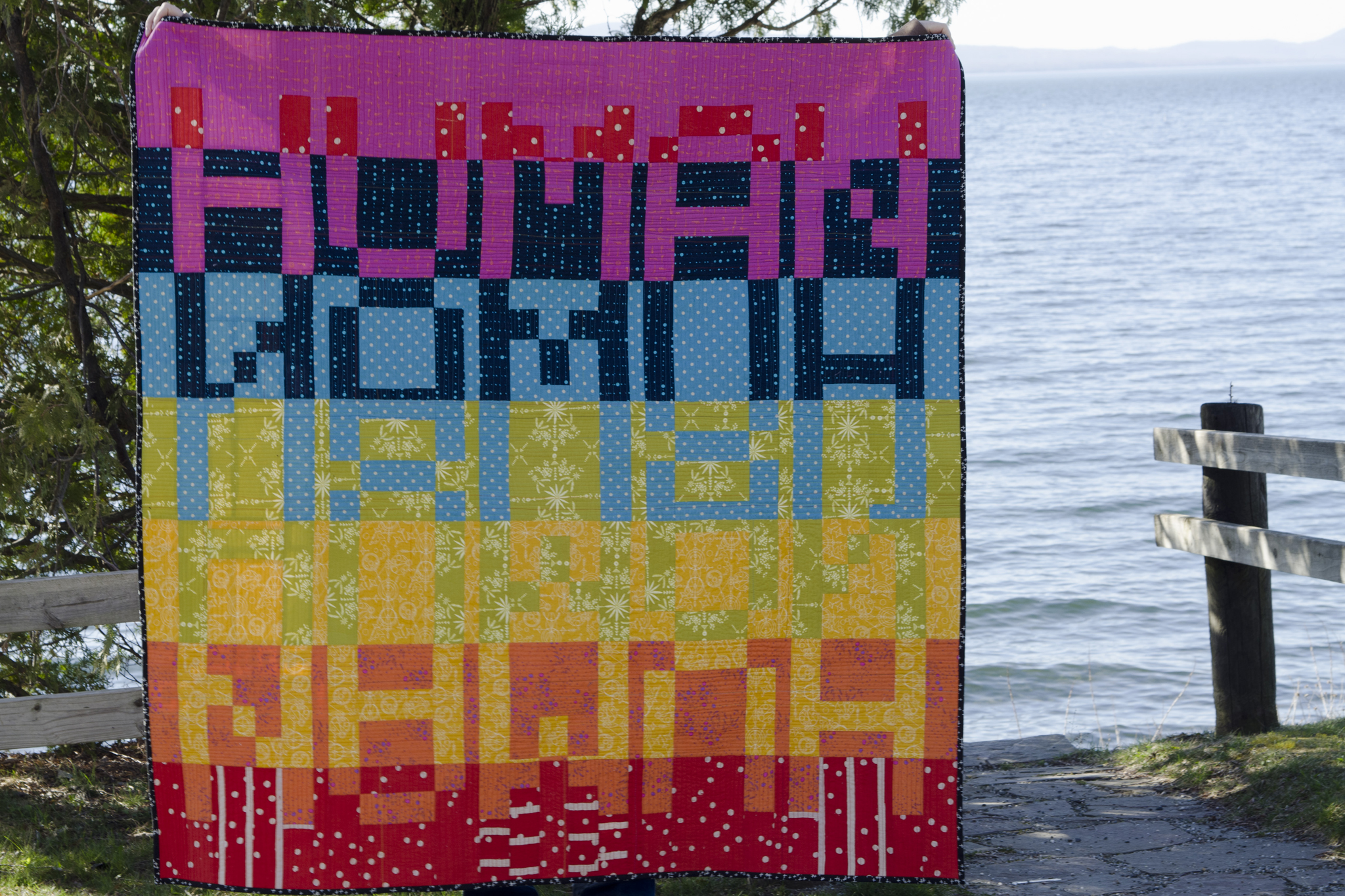
From #lovewins to the passage of North Carolina’s HB2 and similar proposed bills across the nation (if there’s any question, I celebrated the former and decry the latter), discrimination based on how we label ourselves and each other has been on my mind daily in the past year (coincidentally the span of time from this quilt’s conceptualization to completion).
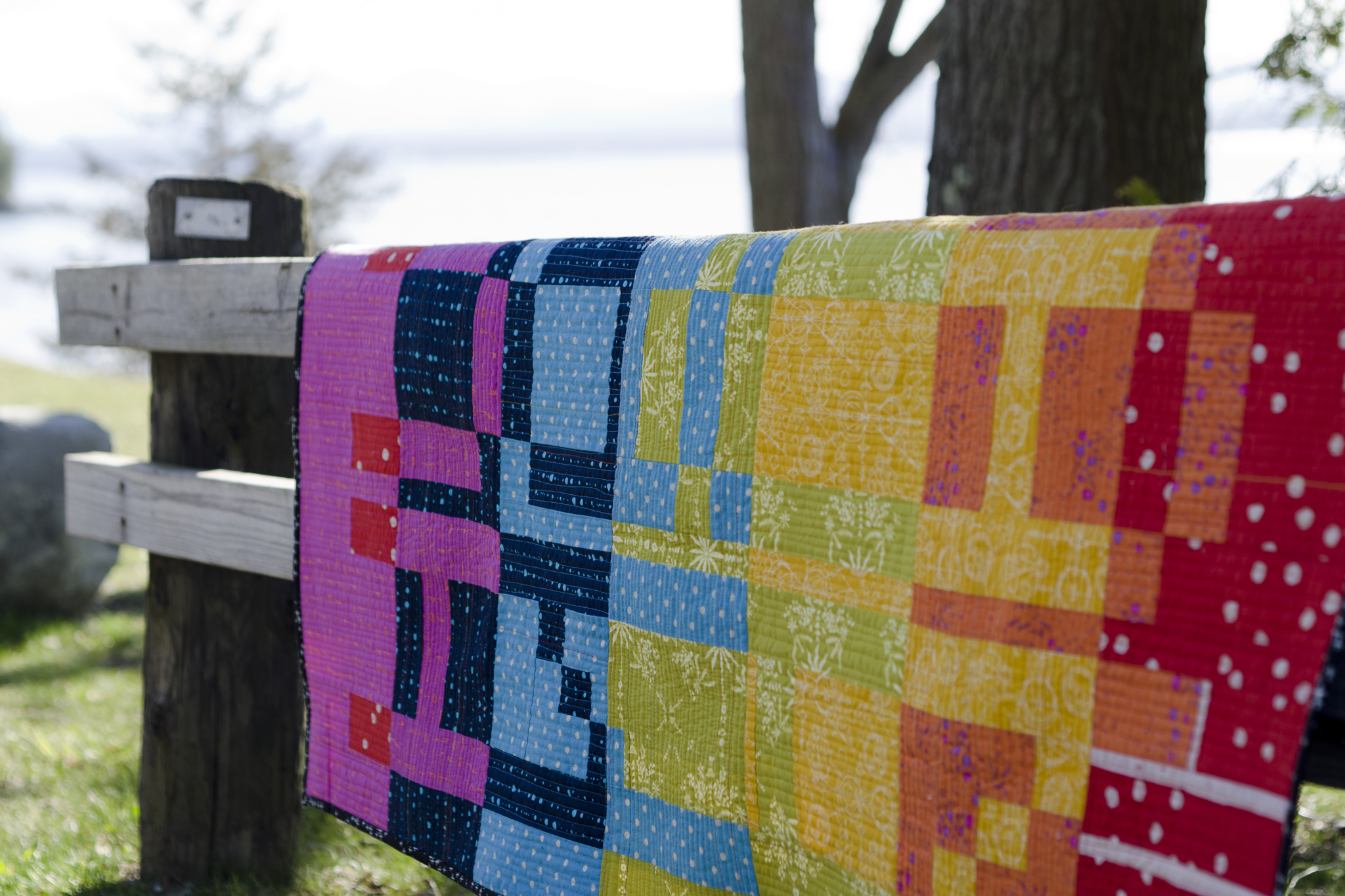
My initial vision included quilting a few different labels that describe aspects of me, but the final quilt isn’t auto-biographical. Despite barely carving out any sewing time in the last few months, I matchstick quilted this quilt. There is a meditative quality about going back and forth, closer and closer, over and over, a welcome respite from everything else on my todo list. While that decision was at the expense of working on any other type of sewing project, it was the right one. I did each section in matching thread, toggling between vertical and horizontal quilting, with a line or two of all the other colors in each row. I used a medium gray in the bobbin (mostly), which blends with the gray side.
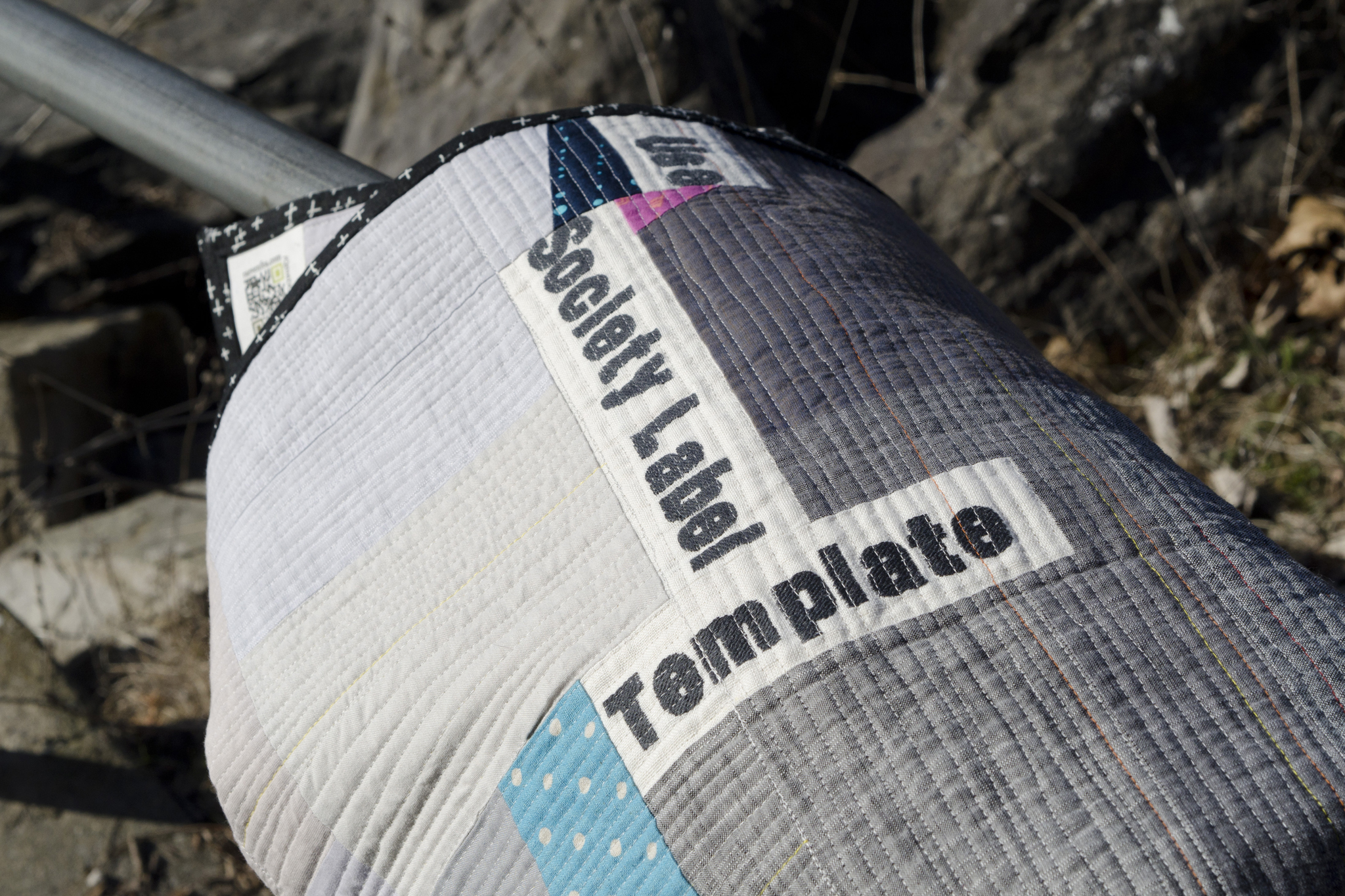
I used Quilter’s Dream Cotton (Request) for the first time, and am impressed by the drape despite the very dense quilting. I also relied solely on 505 Spray to baste, but used a tip from my quilt guild’s president: after spray basting, iron the quilt from the center out to really smooth out the surface. Doing that made a huge difference in shifting and puckering (or lack thereof) while quilting. I recommend both of the products and the ironing process.
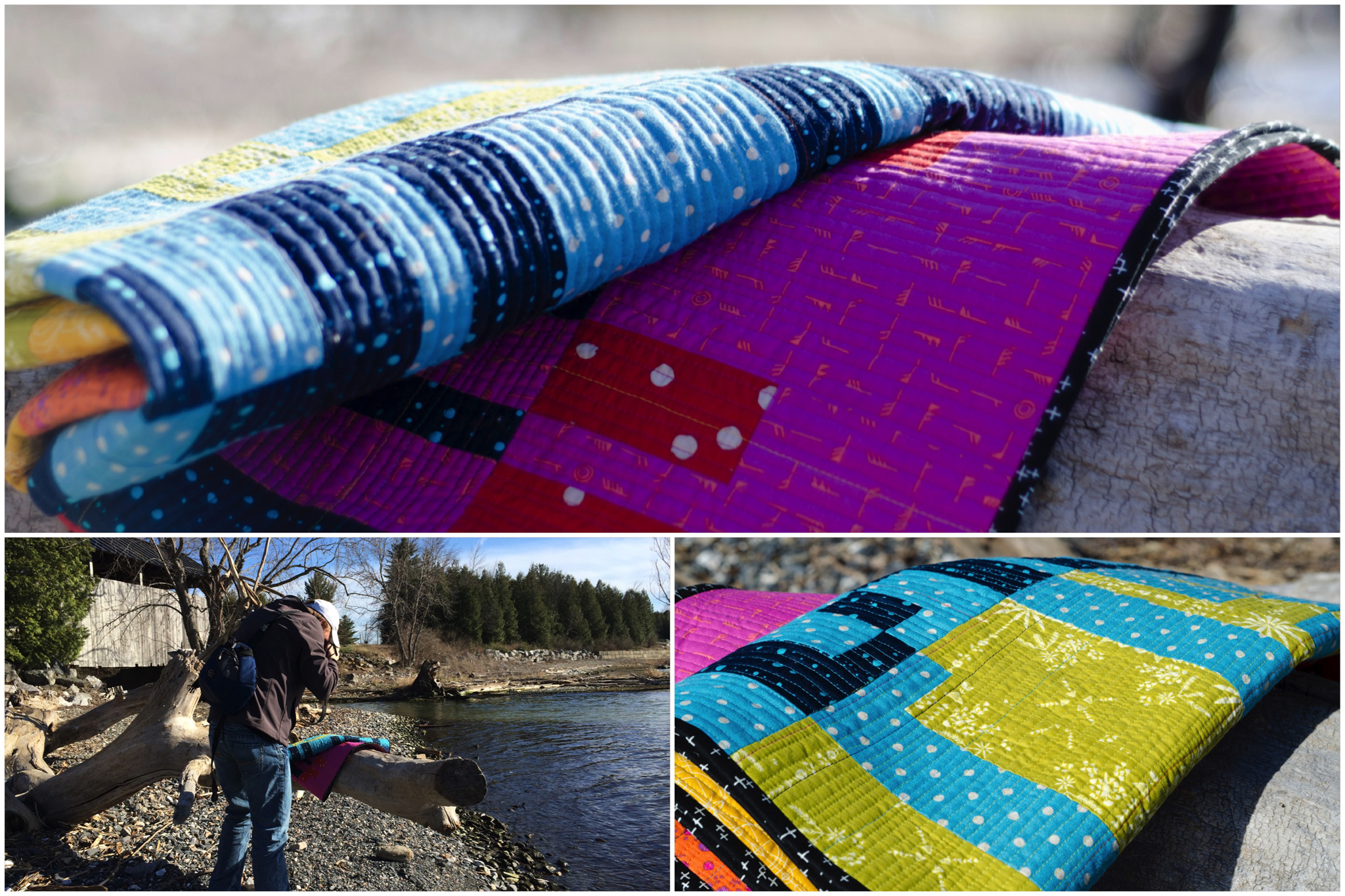
I kept the binding simple, black fabric with white plus signs (Cotton + Steel). I attached it by machine, using Steam-a-Seam Lite 1/4″ fusible web tape to secure it to the back before stitching in the ditch from the front. It’s one of the better machine binding jobs I’ve done!
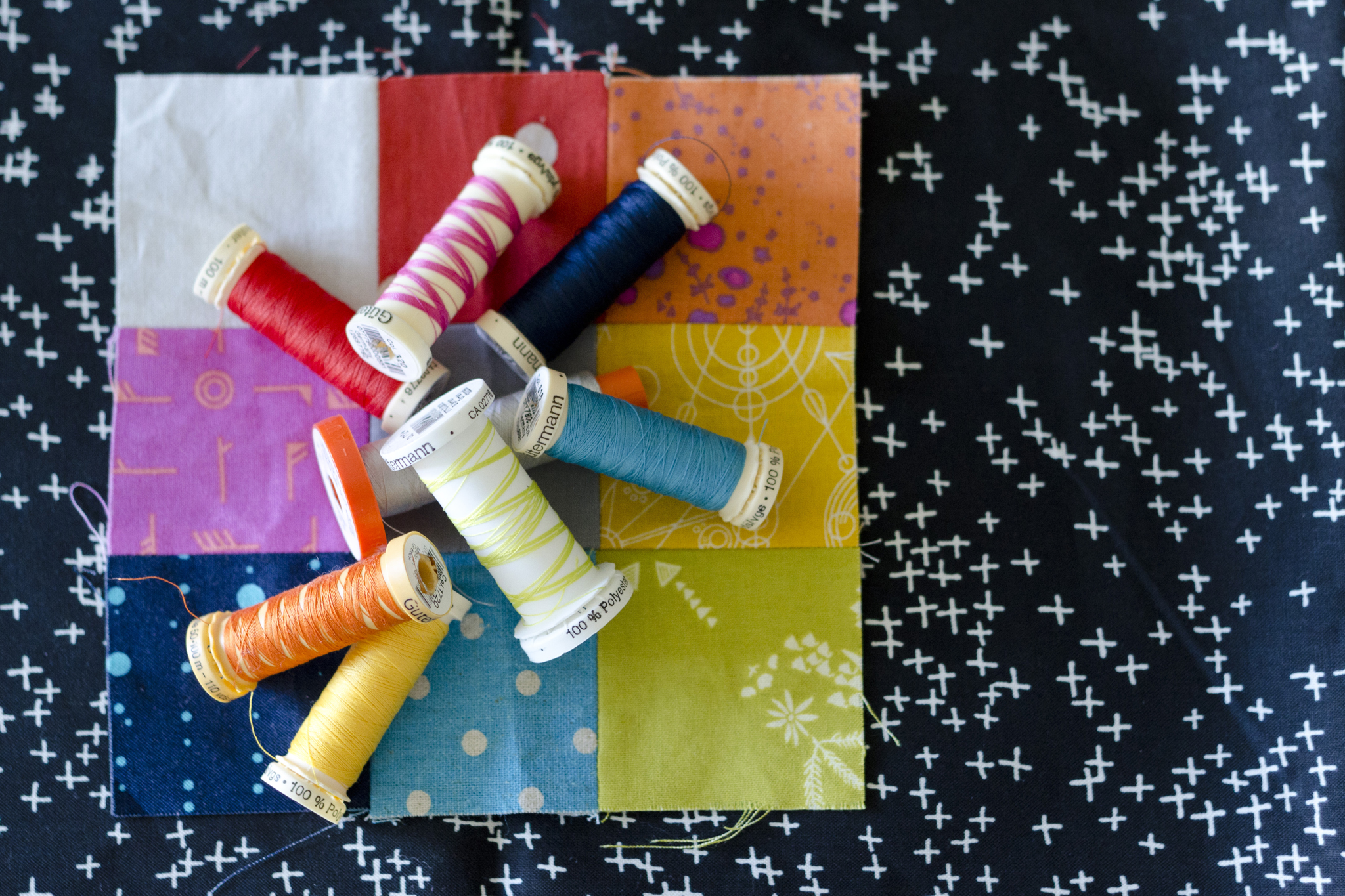
Moof isn’t sure what to think. First, I made a quilt that said Human, then I photographed it in a place that doesn’t allow dogs. Sorry pup.
